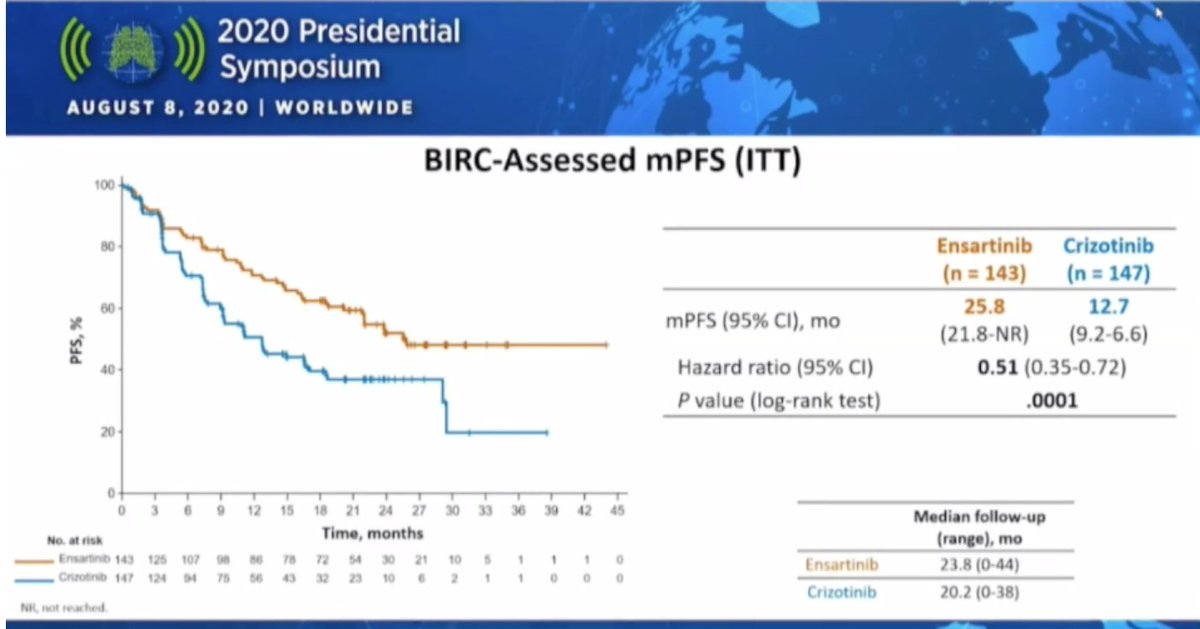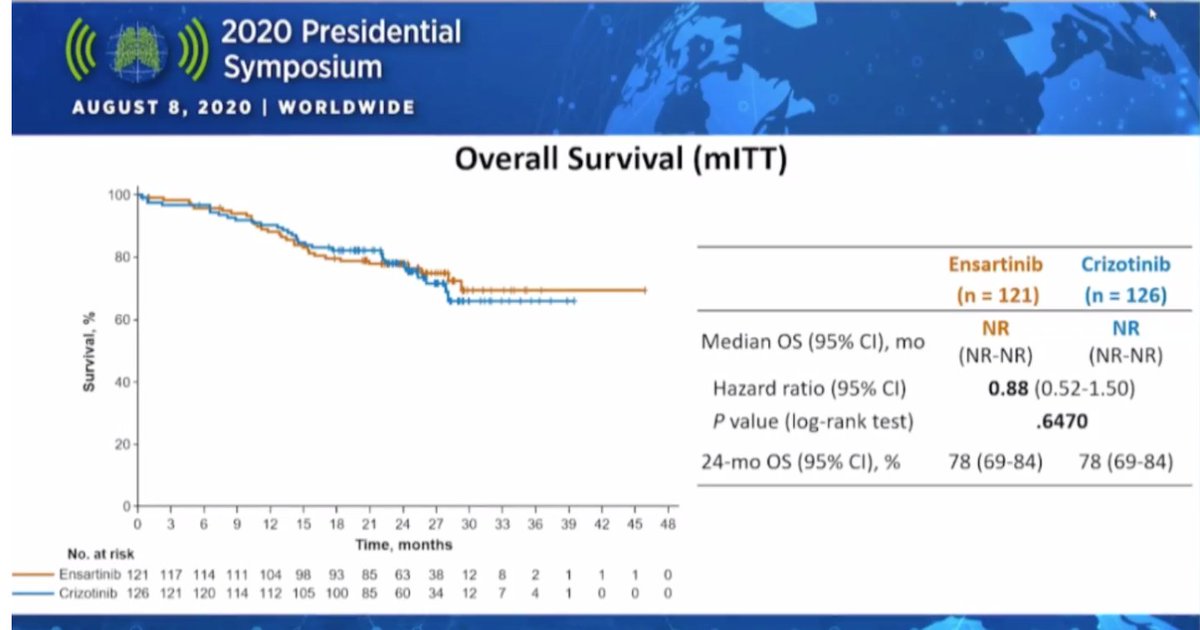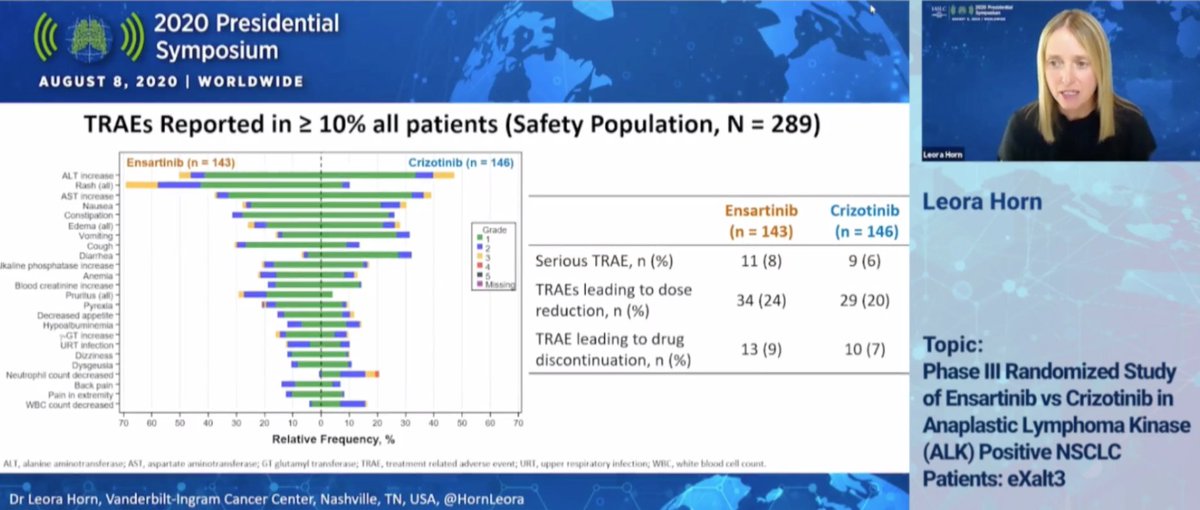Discover and read the best of Twitter Threads about #ALK
Most recents (21)
1) Welcome to a new #accredited #tweetorial, "Utilizing Immunohistochemistry Testing, Biomarkers, and Targeted Therapeutics to Optimize Outcomes in Patients with NSCLC," featuring the highlights of a symposium presented at the #ESMOIO22 congress.
@myESMO #LCSM #FOAMed
@myESMO #LCSM #FOAMed

2) The faculty for this outstanding program were @peters_solange (Chair) 🇨🇭, @HosseinBorghaei 🇺🇸, Natasha Leighl MD 🇨🇦, and @dplanchard 🇫🇷. A truly international roster of experts in #oncology!
Don't miss prior accredited courses in this space at oncologytweetorials-ce.com/category/lung-….
Don't miss prior accredited courses in this space at oncologytweetorials-ce.com/category/lung-….
3) This program is supported by an educational grant from Sanofi. Statement of accreditation and author disclosures are at oncologytweetorials-ce.com/disclosures/.
Trading PF update:
Open:
#HARL (5.9p entry)
#PREM (0.45p)
#ALK (120p)
#MKA (13.3p)
#BSFA (8.6p)
#CGO (6.40p)
#BOIL (0.13p)
Closed:
#MMAG (+86%)
#INCE (flat)
#SPEC (+30%)
Reduced (not exited) HARL over past 24h, best return (% and £-wise) YTD.
[Entries/exits in timeline]
1/18
Open:
#HARL (5.9p entry)
#PREM (0.45p)
#ALK (120p)
#MKA (13.3p)
#BSFA (8.6p)
#CGO (6.40p)
#BOIL (0.13p)
Closed:
#MMAG (+86%)
#INCE (flat)
#SPEC (+30%)
Reduced (not exited) HARL over past 24h, best return (% and £-wise) YTD.
[Entries/exits in timeline]
1/18
Volume returning really nicely to the small cap space, which is creating excellent trading conditions.
My average holding period in the Short-term Trading Portfolio is still around 16 sessions / 3 weeks.
Seemingly contrary to many, I consider trade entries based both on..
2/18
My average holding period in the Short-term Trading Portfolio is still around 16 sessions / 3 weeks.
Seemingly contrary to many, I consider trade entries based both on..
2/18
...fundamentals (see two recent successful trades in MMAG and SPEC, with rationales for trades founded on earnings metrics), and on stories and associated sentiment (BSFA being most recent example).
I don't subscribe to only utilizing one or the other; the same way as I...
3/18
I don't subscribe to only utilizing one or the other; the same way as I...
3/18
1) Waarom ik de term ALK minder of zelfs niet succesvol vind is dat klachten die na een normaal "succesvolle" behandeling aanhouden of waar je normaal verwacht dat deze binnen een bepaalde tijd over zouden moeten gaan, en nieuwe ziektebeelden die ontstaan waar we nog te weinig 



2) over weten, worden samengevoegd.
Als iemand die na een infectie ME ontwikkeld heeft, zie ik dit niet als aanhoudende klachten, maar een nieuw ontwikkelde & onbehandelde ziekte. Toch worden de klachten vergelijkbaar "behandeld" & benaderd waar ik meen dat dit niet (altijd zo)
Als iemand die na een infectie ME ontwikkeld heeft, zie ik dit niet als aanhoudende klachten, maar een nieuw ontwikkelde & onbehandelde ziekte. Toch worden de klachten vergelijkbaar "behandeld" & benaderd waar ik meen dat dit niet (altijd zo)
1) Zo zie je maar weer. Goed artikel geschreven door Peter Hilderink en Audrey van Vugt.
"In 2 casussen van mannen van respectievelijk 26 en 55 jaar illustreren we de complexiteit van #SOLK-patiënten aangezien in beide gevallen een somatische diagnose werd gemist.
De eerste
"In 2 casussen van mannen van respectievelijk 26 en 55 jaar illustreren we de complexiteit van #SOLK-patiënten aangezien in beide gevallen een somatische diagnose werd gemist.
De eerste
2) patiënt presenteerde zich met een onvermogen om te lopen en aanhoudende pijn. Door zijn klachten raakte hij zijn baan kwijt, had hij depressieve buien en gebruikte hij alcohol en cannabis.
Zijn lichamelijke klachten werden beschouwd als een functionele neurologische
Zijn lichamelijke klachten werden beschouwd als een functionele neurologische
3) aandoening. Bij onderzoek bleek echter aan beide zijden een avasculaire necrose van de heupkop. Na een chirurgische behandeling herstelt hij nu langzaam.
De tweede patiënt had 10 jaar geleden seksuele en blaasdisfunctie ontwikkeld. Meer recent ontwikkelde hij problemen met
De tweede patiënt had 10 jaar geleden seksuele en blaasdisfunctie ontwikkeld. Meer recent ontwikkelde hij problemen met
Draadje over #Solk #ALK en bejegeing door artsen, van Linkedin, voor diegen die geen linkedin hebben hier de kopie.
Soms denk ik terug aan mijn werk als arts op de Spoedeisende hulp. Eén patiënte blijft in mijn geheugen gegrift staan. Als ik aan haar terugdenk
1/?
Soms denk ik terug aan mijn werk als arts op de Spoedeisende hulp. Eén patiënte blijft in mijn geheugen gegrift staan. Als ik aan haar terugdenk
1/?
voel ik schaamte en een grote wens het opnieuw te kunnen doen.
Ze was een vrouw van begin 20 die met enige regelmaat een SEH bezocht. Bekend met pseudo-epilepsie en herhaalde schouderluxaties. Pseudo-epilepsie betekent
2/?
Ze was een vrouw van begin 20 die met enige regelmaat een SEH bezocht. Bekend met pseudo-epilepsie en herhaalde schouderluxaties. Pseudo-epilepsie betekent
2/?
dat er geen duidelijke neurologische oorzaak is voor de aanvallen en dat de psyche een rol speelt in deze klachten. Mijn interpretatie in die tijd - en van vele collega´s met mij - was: deze vrouw stelt zich aan, doet dit zelf of opzettelijk en hoort niet op een SEH
3/?
3/?
@myESMO #ESMO20 as a #trainee can be #overwhelming! So many good studies, some more #practicechanging then others, if you missed some and want to understand (albeit at a simplistic #trainee level), sit back, relax and enjoy as we go through some great data #ESMO20 @OncoAlert
1. #NSCLC: 2 major studies #ADAURA #CROWN for adjuvant #EGFRmNSCLC, and advanced #ALK+ experts can provide better perspective @JackWestMD @n8pennell @StephenVLiu @AMansfieldMD @CharuAggarwalMD @NarjustDumaMD @GlopesMd @DevikaDasMD @OncoAlert
1. A) #ADAURA: Stage IB-IIIA #resected #NSCLC with #EGFRm treated with #Osimertinib vs #placebo [SOC prior to this was adjuvant chemotherapy [cisplatin-based doublet based on #LACE metanalysis- pubmed.ncbi.nlm.nih.gov/18506026/] showed improvement in #DFS @NEJM nejm.org/doi/full/10.10…
#ESMO20 Discussion of CROWN led by @christine_lovly. Markedly positive results from the study. Limitations aside, lorlatinib compares very favorably to other 2G TKIs - alectinib, brigatinib, ensartinib. Toxicity is different. 



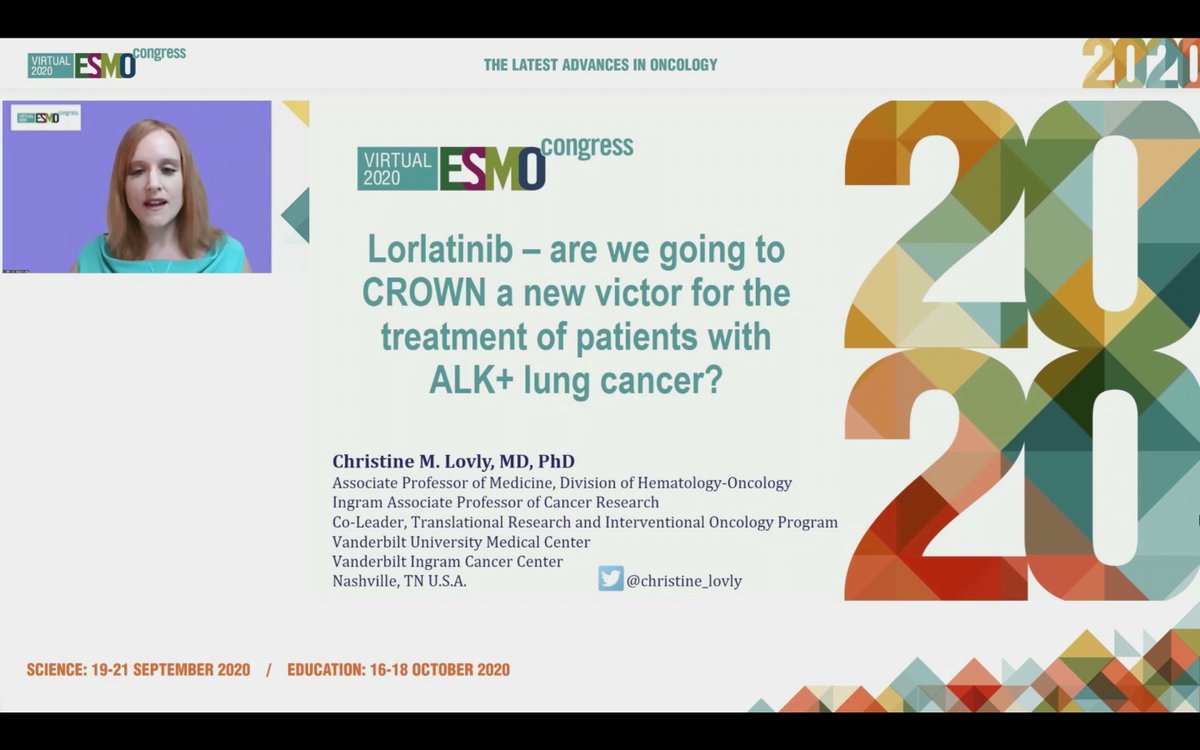
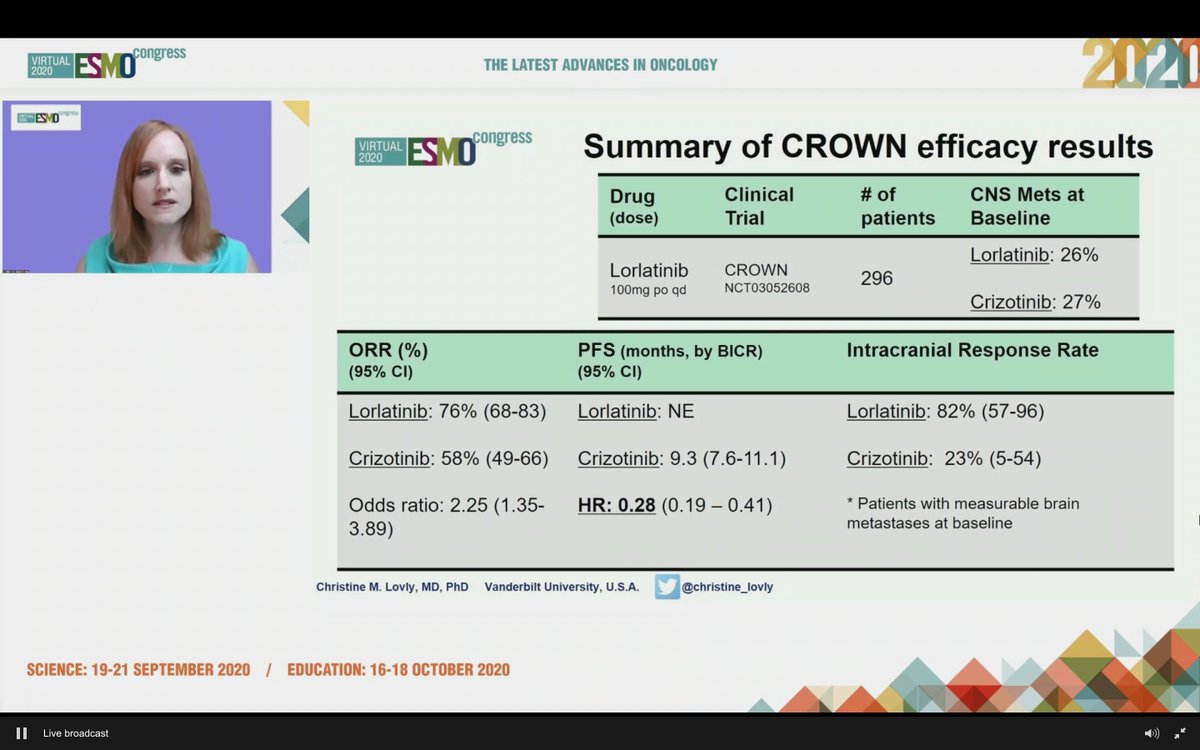

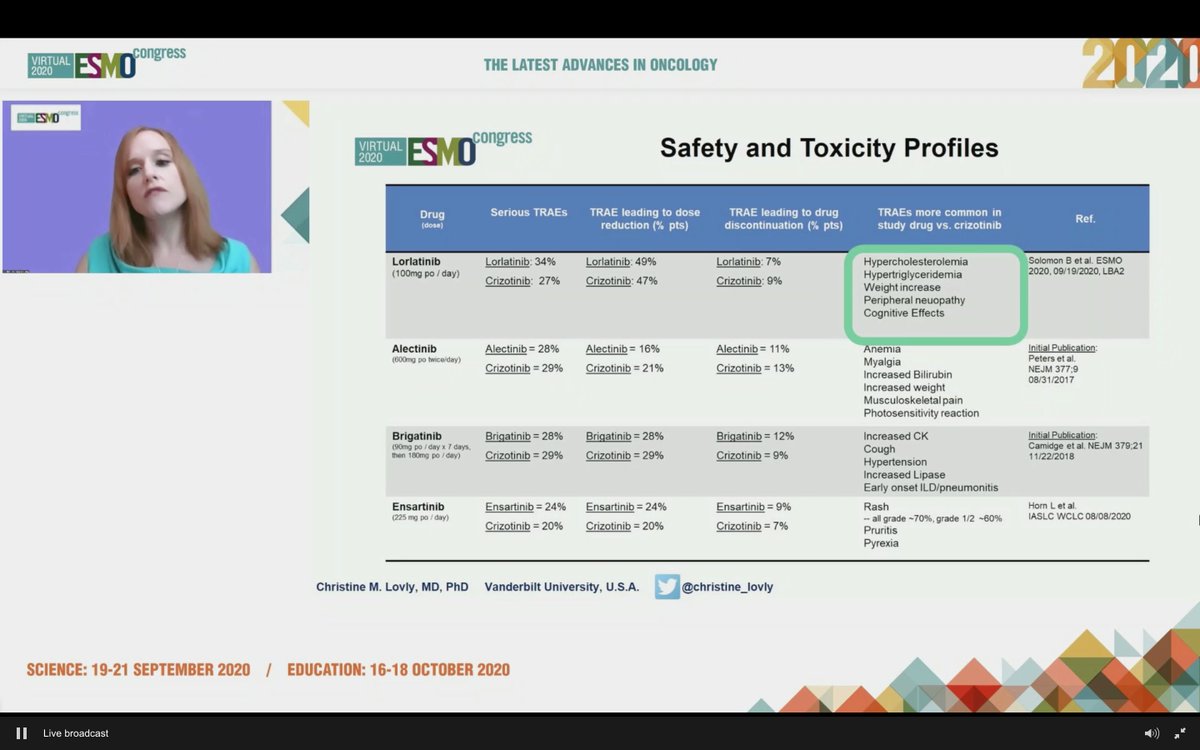
#ESMO20 We will need to learn more about resistance to 1L lorlatinib and seek biomarkers to help guide initial therapy in #ALK NSCLC but having more options is a good thing and overall, the HR and CNS efficacy are very compelling. #LCSM @OncoAlert 



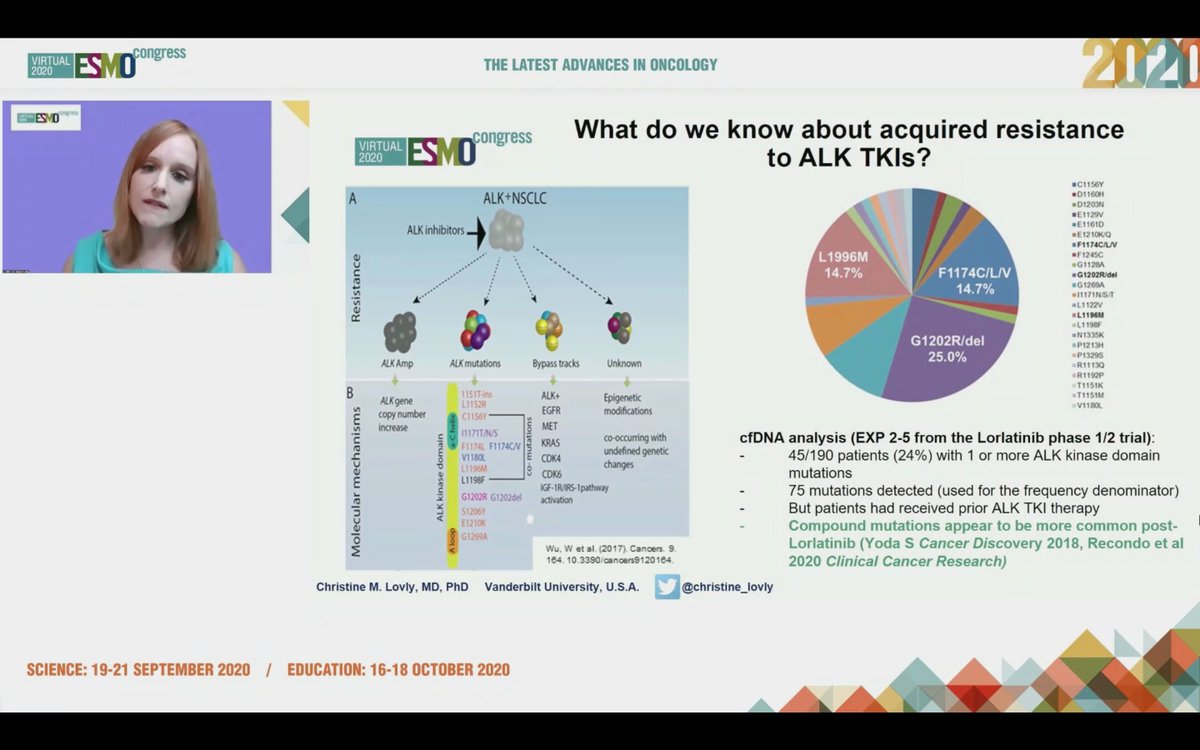
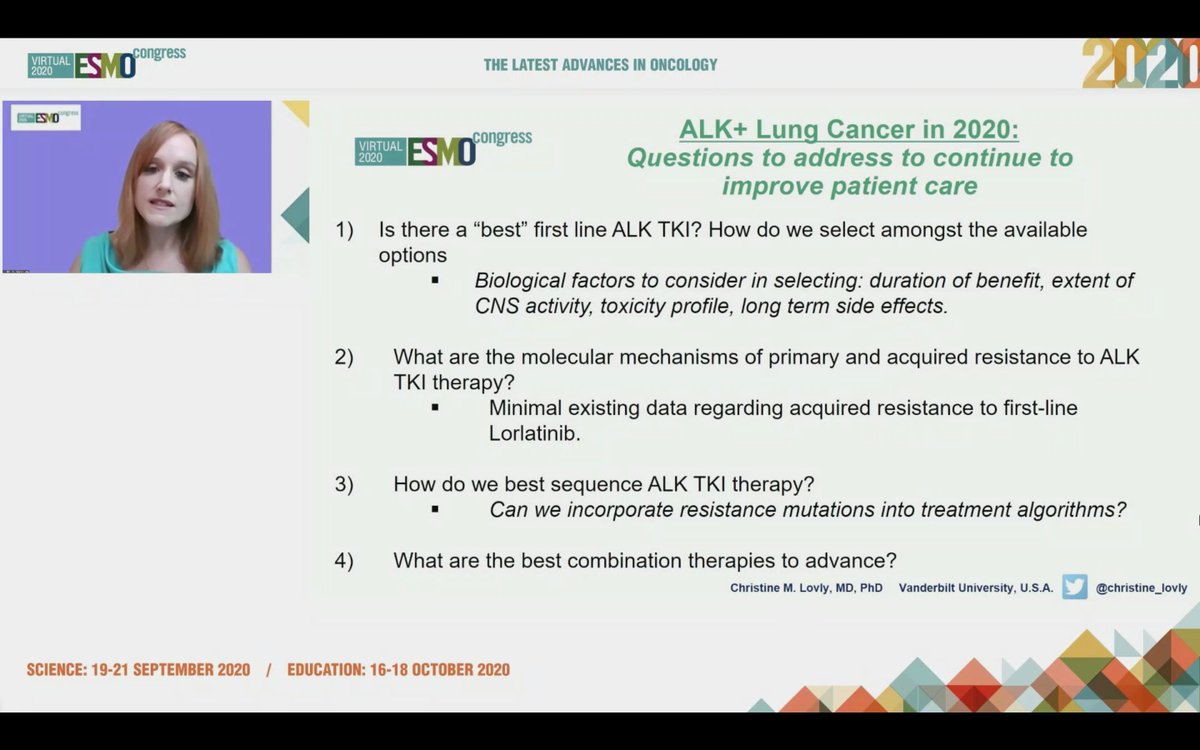
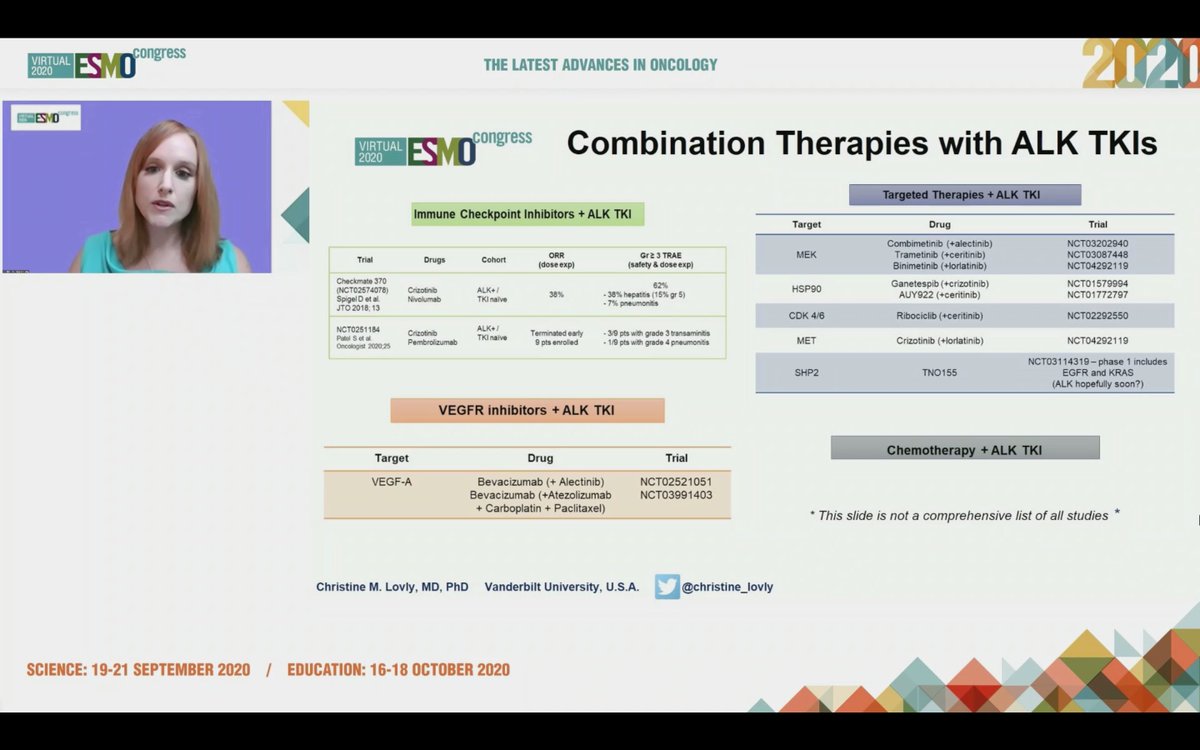
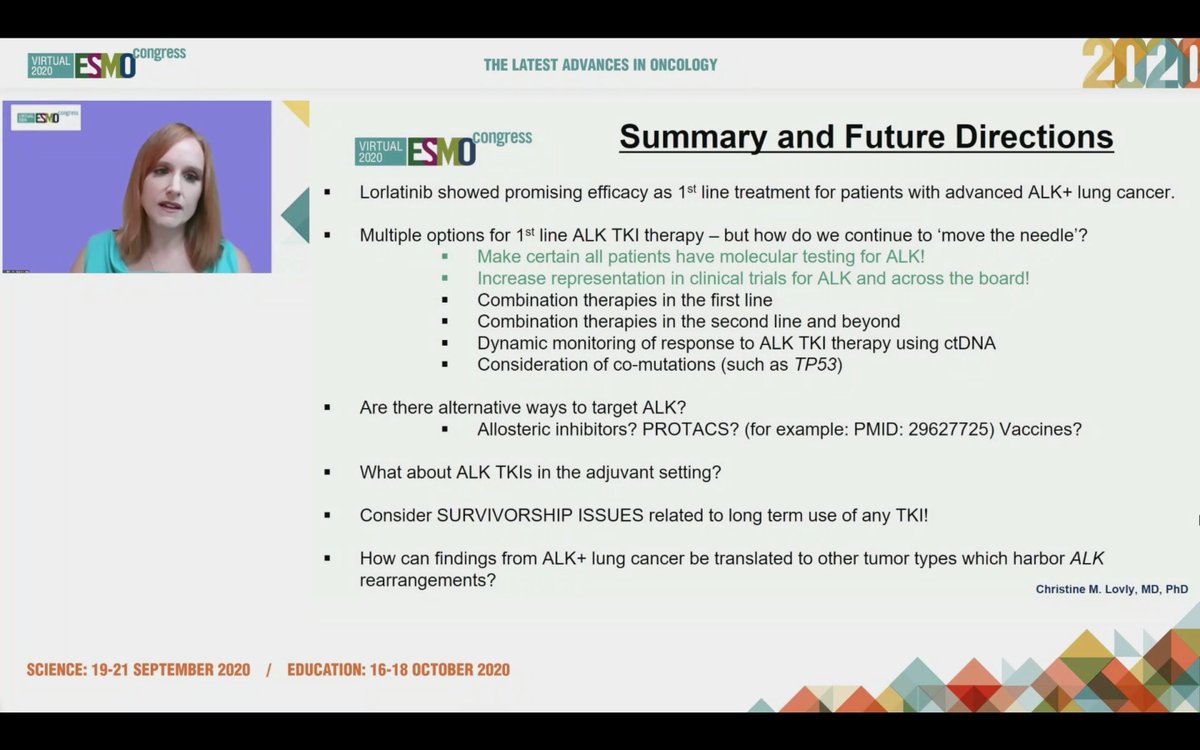
#ESMO20 Tremendous progress seen in #ALK NSCLC and @christine_lovly makes a note to thank the important work done by our patient advocate colleagues @ALKLungCancer @alk_fusion #LCSM 
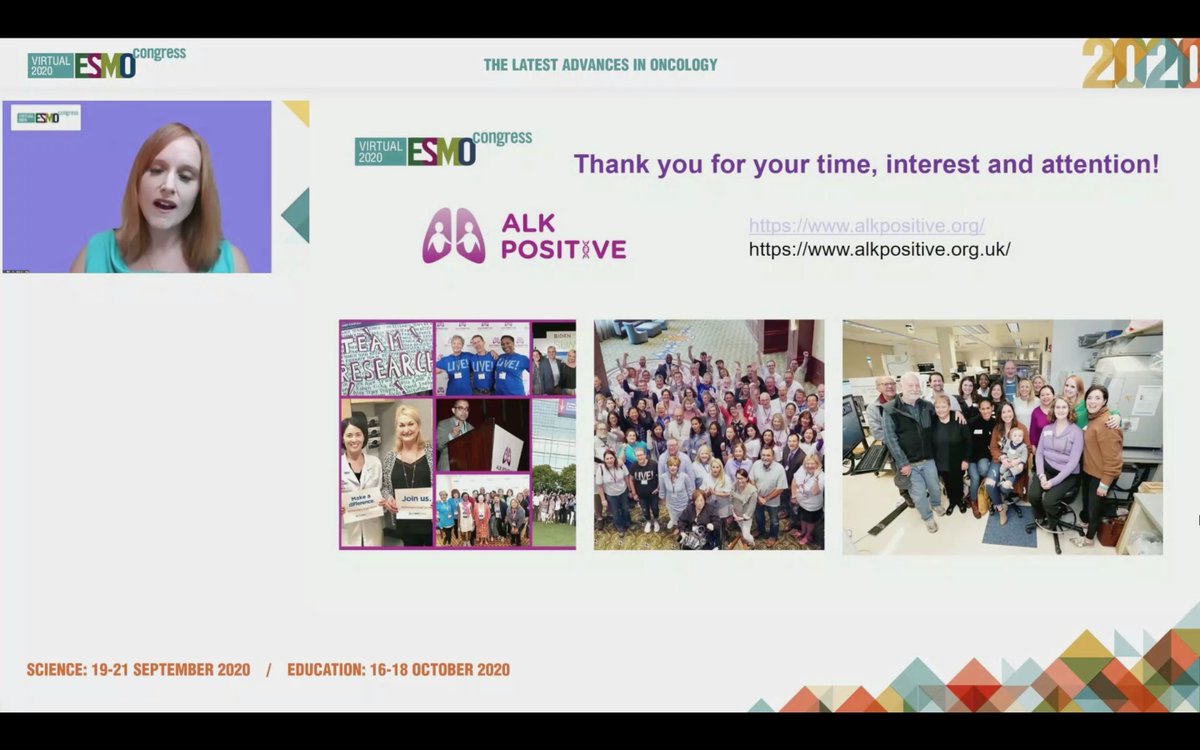
#ESMO20 Discussion of the phase III CROWN trial results (planned interim analysis): lorlatinib vs crizotinib in treatment naive #ALK #NSCLC by @bensolomon1 - potentially practice changing data in an important subset of lung cancer. #LCSM @OncoAlert 
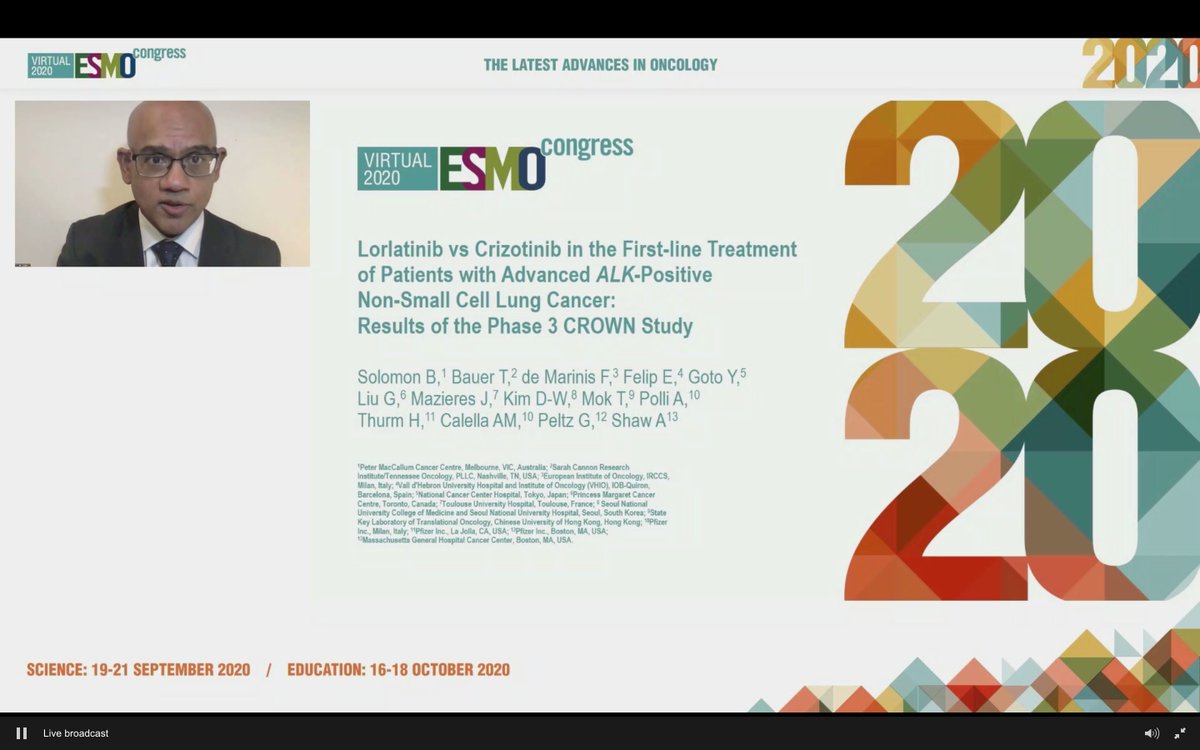
#ESMO20 #ALK fusion positive NSCLC is an important subset where we have very potent and active agents with PFS measured in years - but always room for improvement. #LCSM @OncoAlert 
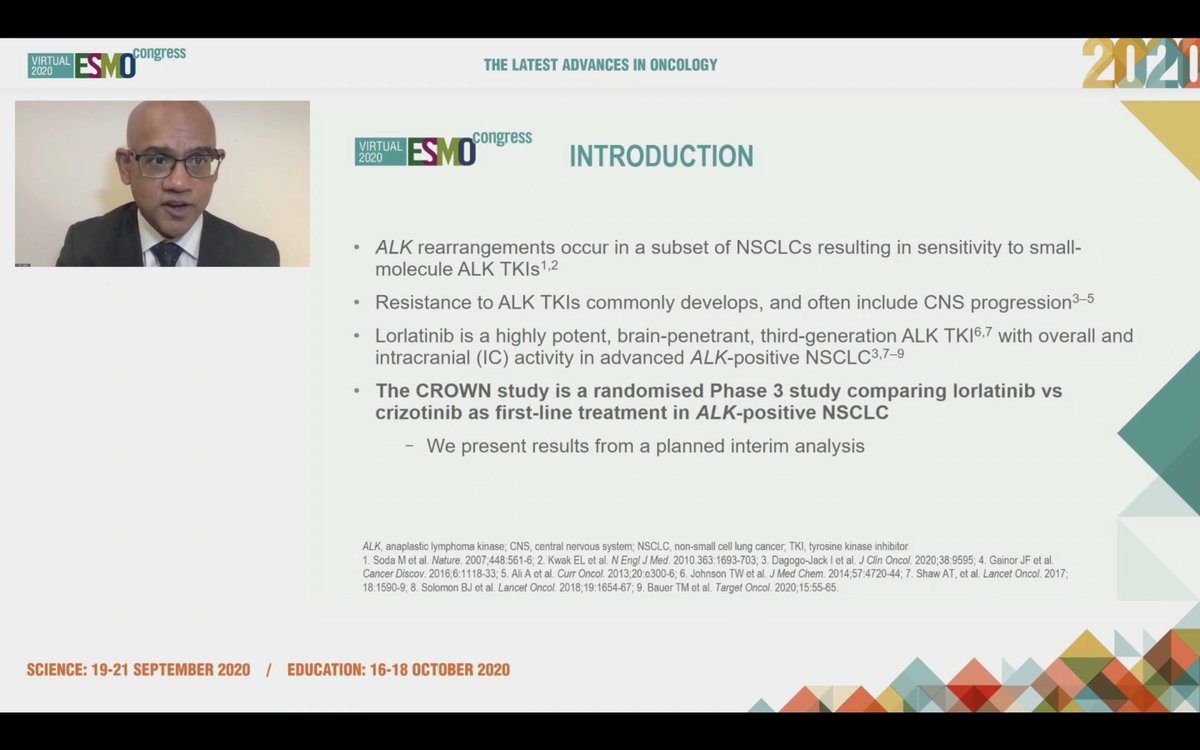
#ESMO20 Study design for CROWN shown here. Standard 1:1 randomization to lorlatinib 100mg qday vs crizotinib 250mg bid, stratified by Asian vs not and presence or absence of brain metastases. Primary endpoint was PFS by BICR. #LCSM @OncoAlert 





#VPS20 Eagerly awaited results of the eXalt3 trial of ensartinib vs crizotinib in #ALK #NSCLC presented by @HornLeora - straightforward randomized design. #LCSM #WCLC20 @IASLC 




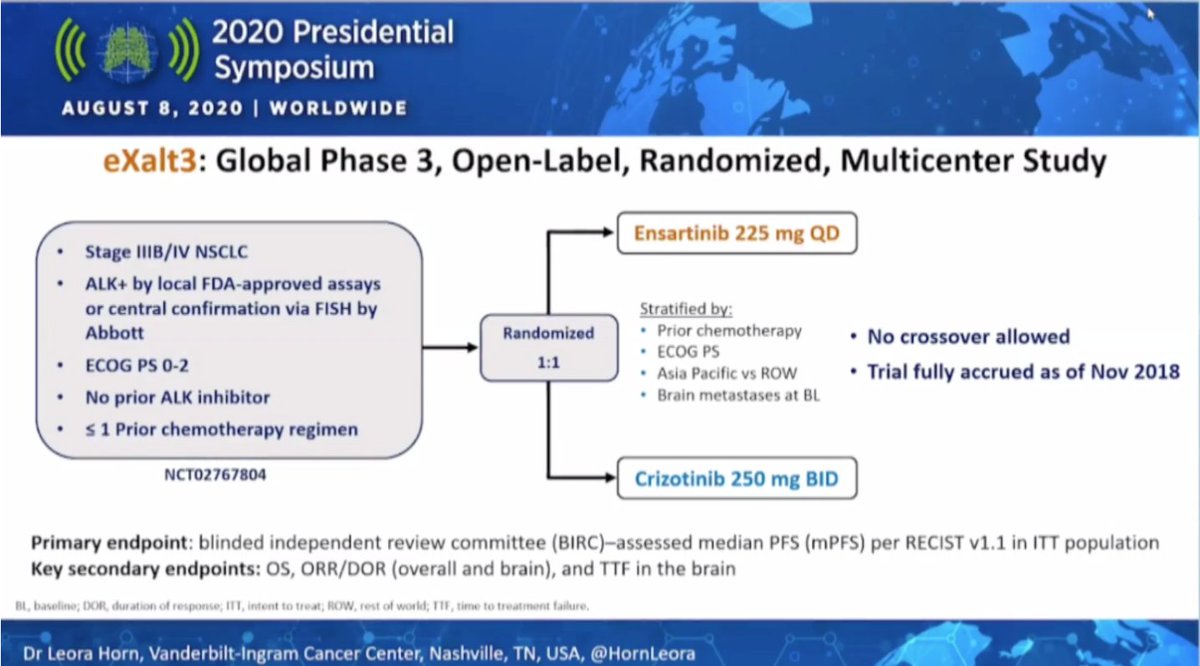
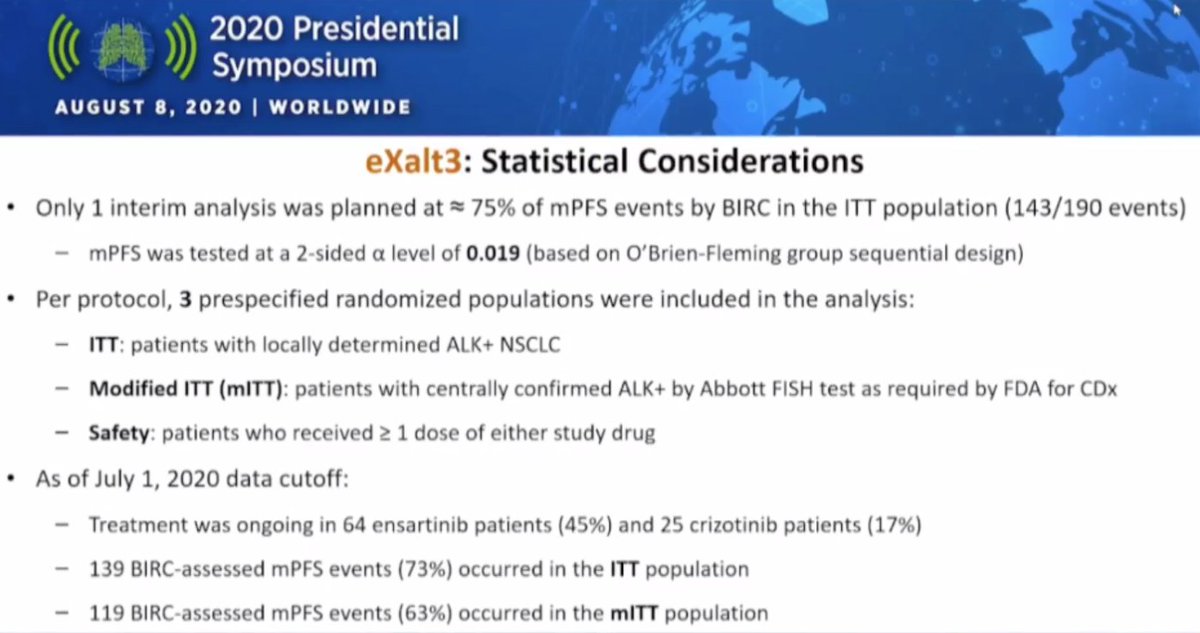
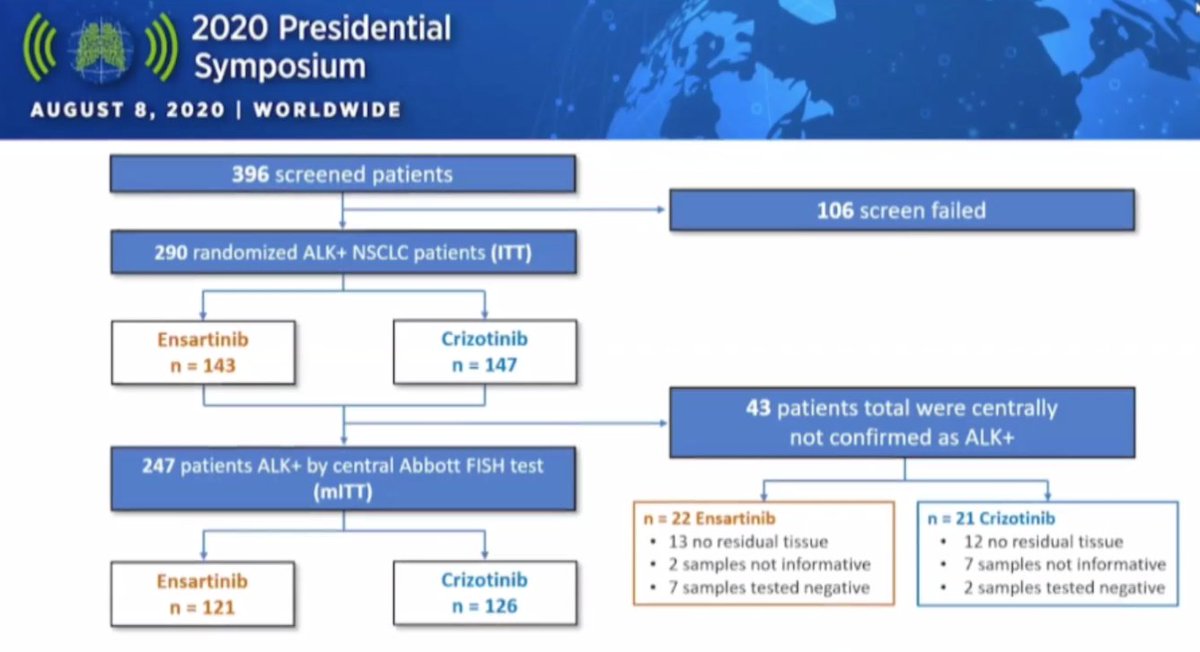
Bird’s-eye view 👁 on what to look out for @WCGIC #WorldGI2020.
Opening remarks on important data 📺 @myESMO - by Dr. Eric Van Cutsem @UZLeuven.
🟩Good to see more #PrecisionMedicine🧬
🟥#Immunotherapy #Immuno-#oncology
🟦TNT & other chemo strategies
@Annals_Oncology #OncoAlert
Opening remarks on important data 📺 @myESMO - by Dr. Eric Van Cutsem @UZLeuven.
🟩Good to see more #PrecisionMedicine🧬
🟥#Immunotherapy #Immuno-#oncology
🟦TNT & other chemo strategies
@Annals_Oncology #OncoAlert
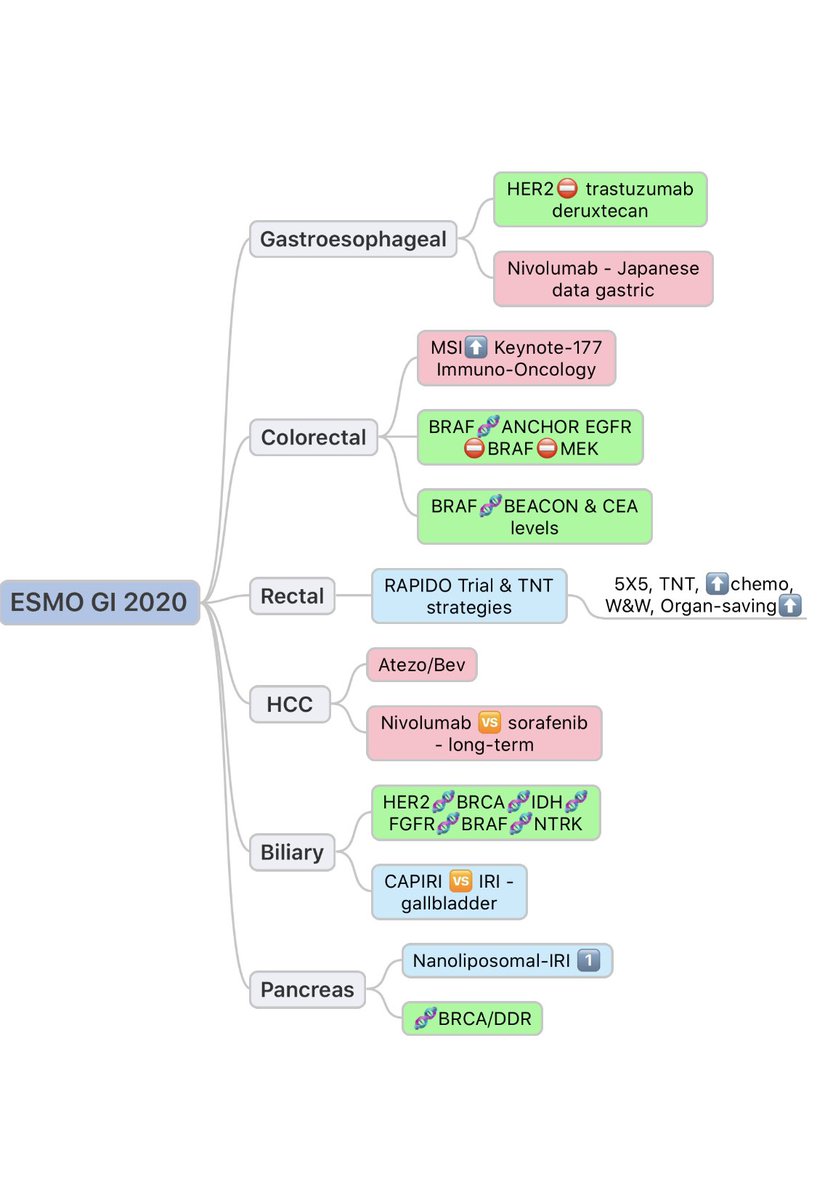
🆕#ctDNA #liquidbiopsies 🩸🧬
👀 👇🏾at the number of #clinicaltrials cropping up in this space‼️
🇦🇺DYNAMIC-II
🇦🇺DYNAMIC-III
🇺🇸COBRA @NRGonc
🇺🇸BESPOKE
🇺🇸@SU2C
🇯🇵 CIRCULATE
🌎COLUMBIA
🇮🇹🇪🇸PEGASYS
🇬🇧TRACC
🇩🇪CIRCULATE
🇫🇷crEATE
🇩🇰IMPROVE-IT
We have 2🇺🇸studies open. #CRCSM #WorldGI2020
👀 👇🏾at the number of #clinicaltrials cropping up in this space‼️
🇦🇺DYNAMIC-II
🇦🇺DYNAMIC-III
🇺🇸COBRA @NRGonc
🇺🇸BESPOKE
🇺🇸@SU2C
🇯🇵 CIRCULATE
🌎COLUMBIA
🇮🇹🇪🇸PEGASYS
🇬🇧TRACC
🇩🇪CIRCULATE
🇫🇷crEATE
🇩🇰IMPROVE-IT
We have 2🇺🇸studies open. #CRCSM #WorldGI2020
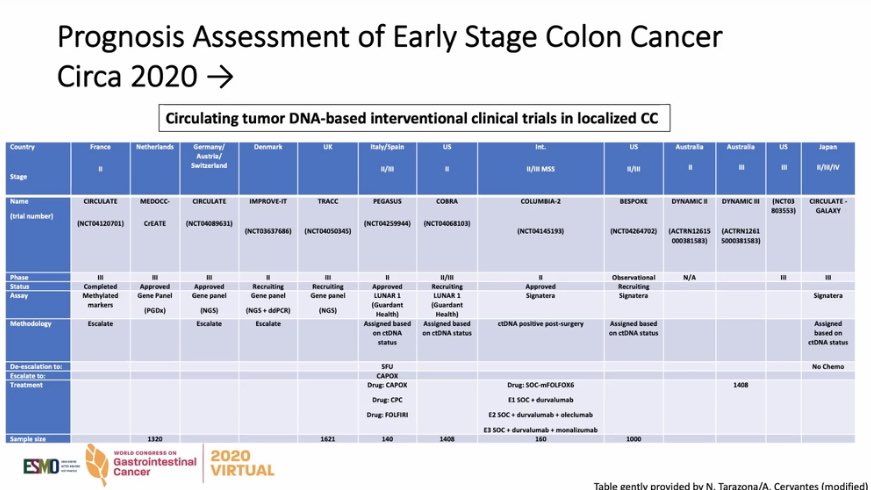
#WORLDGI2020 This is 🆒 ☢️ 32-P EUS-guided implantation in #pancreascancer #PANCSM @myESMO @WCGIC @Annals_Oncology.
Still miles to go. OS median of 16 months pointing again to the systemic nature of disease. Need to piggyback these local approaches to better systemic. #OncoAlert



Still miles to go. OS median of 16 months pointing again to the systemic nature of disease. Need to piggyback these local approaches to better systemic. #OncoAlert
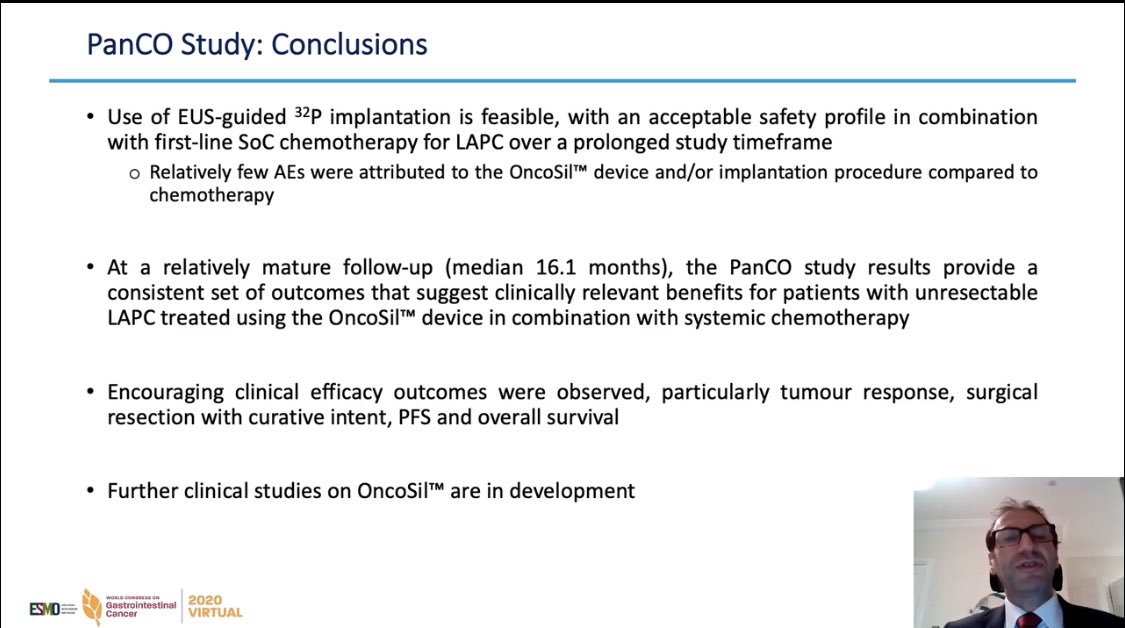
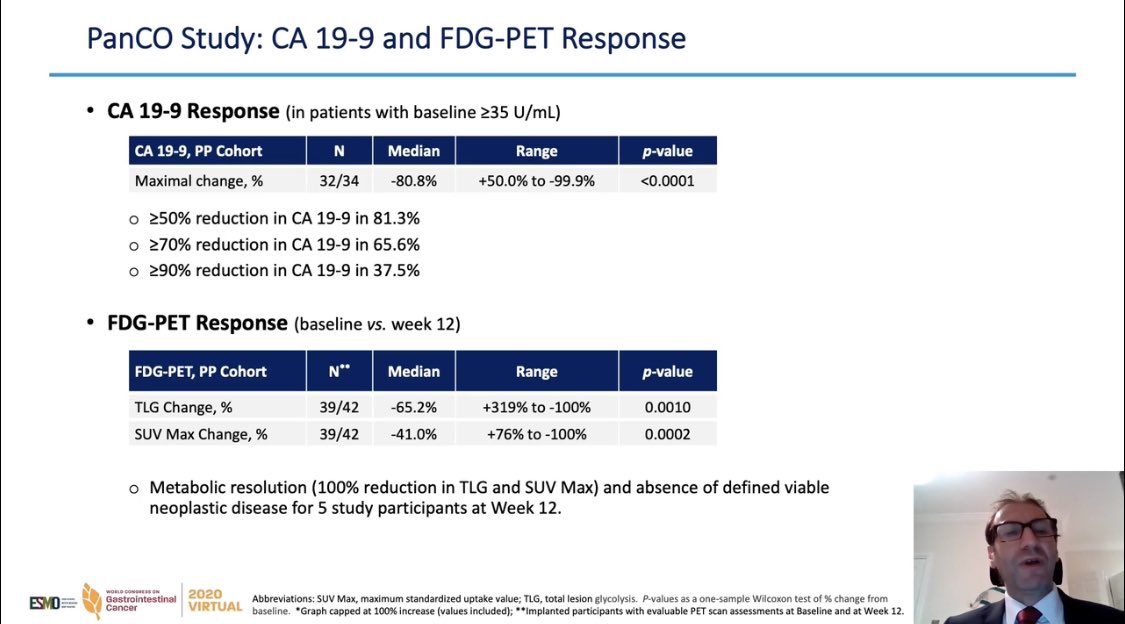

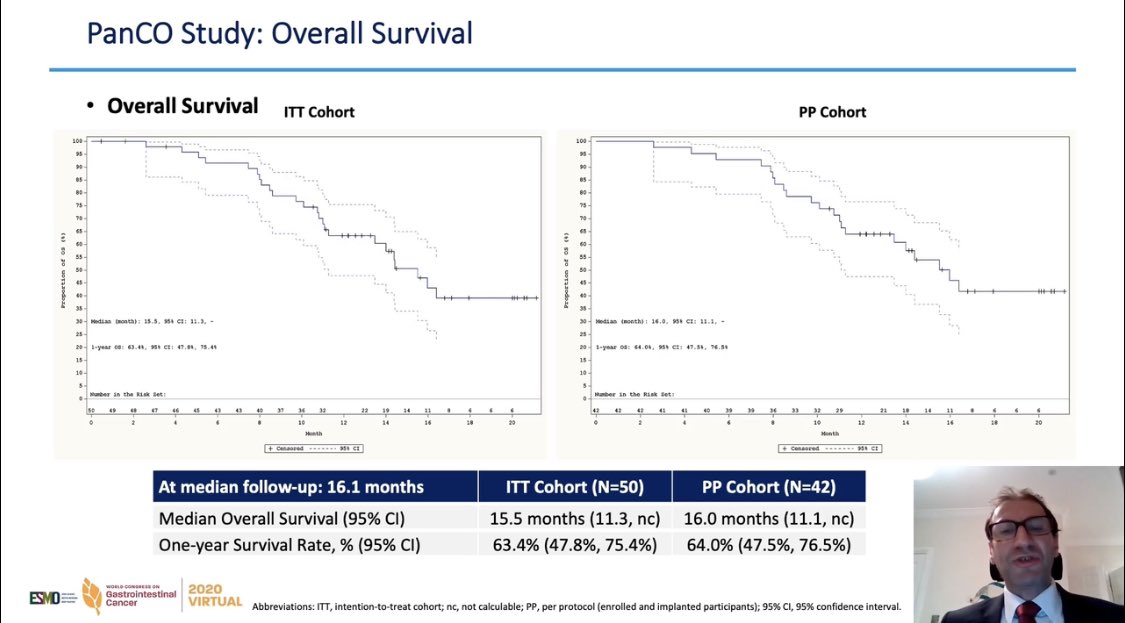
#ASCO20 Abstract 9537 has results from J-ALTA, phase 2 trial of brigatinib (90mg qd x 1wk then 180mg qd) post-alectinib for #ALK NSCLC. Included 47pts who progressed on prior alectinib (+/- prior crizotinib) and RR 30%, DCR 79%, median time to response 1.9m. #OncoAlert #LCSM 







#ASCO20 Median PFS with brigatinib following alectinib (+/- prior crizotinib) was 7.3m. In 8pts with measurable CNS disease, intracranial RR 25% (63% SD). Updated analysis adds 1 response for ORR 34%, median duration of response of 11.8m! #OncoAlert #LCSM 







#ASCO20 Response to brigatinib (post-alectinib) noted in the presence of various #ALK resistance mutations including G1202R (1/3), L1196M (3/3), I1171N (1/2), I1171S (1/1). Well tolerated. Most common G3 tox were lipase (no pancreatitis), CK (no myalgias), HTN. #OncoAlert #LCSM 



#OncoAlert Case in Clinical Lung Cancer the reports an acquired #ALK fusion for a patient with #EGFR #NSCLC receiving osimertinib. Had long responses to both gefitinib and osimertinib before testing at PD showed this new fusion. #LCSM
clinical-lung-cancer.com/article/S1525-…
clinical-lung-cancer.com/article/S1525-…
#OncoAlert At PD on osimertinib, biopsy was sent for NGS and revealed EGFR del19 and T790M and amplification as well as a new ELM4/ALK fusion (with +IHC). Successfully treated with crizotinib + osimertinib then brigatinib + osimertinib. #LCSM 

Add to the list of alterations in driver oncogenes emerging as mechanisms of resistance (MET, ROS1, NRG1, KRAS, RET and now ALK). Why does NSCLC keep revisiting the same pathways? Push for NGS at PD! #LCSM @Jbauml @rdoebele @ZPiotrowskaMD @JessicaJLinMD @alexdrilon @VivekSubbiah
#OncoAlert Report @JTOonline on PDL1 variability in metastatic #NSCLC. A lot of intriguing information on this increasingly imperfect biomarker. Important to understand what's driving the heterogeneity and how it impacts treatment. @IASLC #LCSM
jto.org/article/S1556-…
jto.org/article/S1556-…
#OncoAlert In an analysis of 1398 patients with NSCLC they looked at patterns of PD-L1 expression and the impact of disease site and prior therapy. In a subset who received checkpoint inhibitors, they also looked at outcomes. Could influence how we look at PDL1 IHC. #LCSM
Lesson 1: PD-L1 varies by site. Previously reported. If the biopsy is from liver or adrenal, PDL1 runs higher. Brain and bone, PDL1 tends to be low. Some sets have small numbers but interesting trends and may reflect differences in the immune microenvironment #OncoAlert #LCSM 

#OncoAlert Important paper now online @CCR_AACR by Dr. Dagogo-Jack @JessicaJLinMD @JustinGainor @MGHThoracicOnc on #MET alterations mediating acquired resistance to #ALK TKI therapy in #NSCLC. Analysis of > 200 post-treatment specimens by FISH/NGS. #LCSM
clincancerres.aacrjournals.org/content/early/…
clincancerres.aacrjournals.org/content/early/…
#OncoAlert Exploration of the impact of #EGFR TKIs on the #TME @CCR_AACR. Analysis of 138 patients with EGFR+ #NSCLC who received a 1st gen EGFR TKI and had pre/post biopsies. Assayed changes in PD-L1 expression, TIL density and TME makeup. #LCSM
clincancerres.aacrjournals.org/content/early/…
clincancerres.aacrjournals.org/content/early/…
@CCR_AACR In general, samples taken post 1st gen TKI had higher PDL1 expression but induction of strong PDL1 expression accompanied by increase in Treg density and CD73 expression. Understanding the TME will allow us to unlock IO benefit (and explain the toxicity when IO precedes TKI). 

@CCR_AACR PDL1 upregulation more common in context of T790M negative resistance. Interestingly, potentially different impact when osimertinib given (no CD73 upregulation). Does our choice of EGFR TKI impact potential efficacy of IO therapy in the future? So many variables to consider! 

#ESMOAsia19 Dr. Ross Camidge with the updated results from the phase 3 ALTA-1L study of first-line brigatinib versus crizotinib in #ALK #NSCLC - at interim analysis presented at @IASLC #WCLC2018, study met its primary endpoint. Here are updates with longer f/u. #LCSM #LCAM 

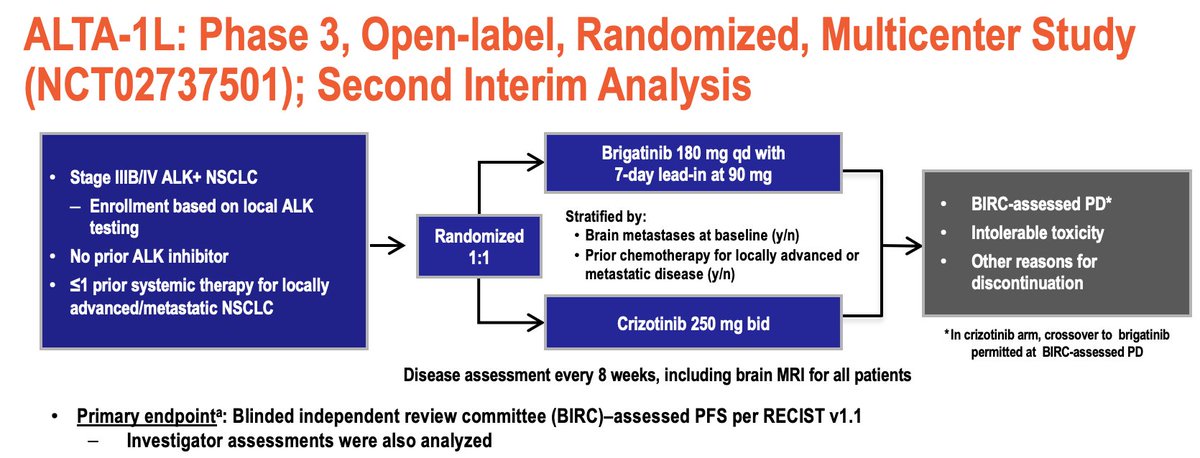

@IASLC #ESMOAsia19 Primary endpoint of BIRC PFS showed HR 0.49 (95% CI, 0.35-0.68) with 2-year PFS rate 48% vs. 26% and investigator assessed PFS HR 0.43 #OncoAlert #LCSM 
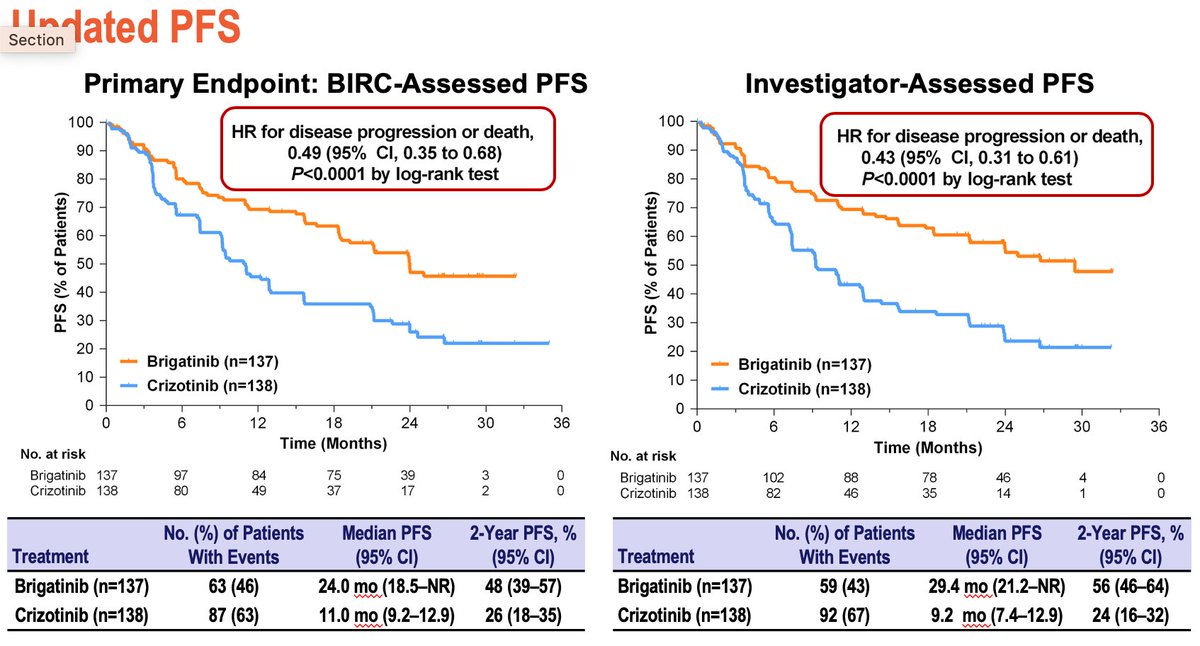
@IASLC #ESMOAsia19 Very impressive outcomes in patients with brain metastases at baseline (PFS HR 0.25)! Very good tolerability, early pulmonary events in this setting very uncommon. Good to have a new standard of care option for patients with #ALK #NSCLC - #LCSM #LCAM #OncoAlert 


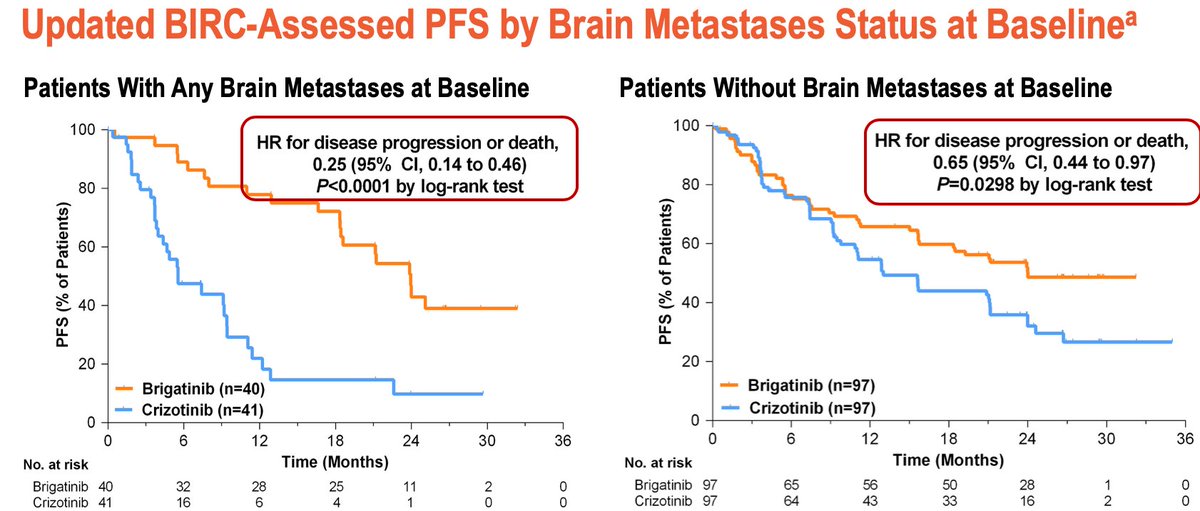


#DCLUNG19 Impressive discussion of #ALK targeted therapy and resistance by global expert @JessicaJLinMD - great 1L options with a wonderful summary table. #LCSM #LCAM 



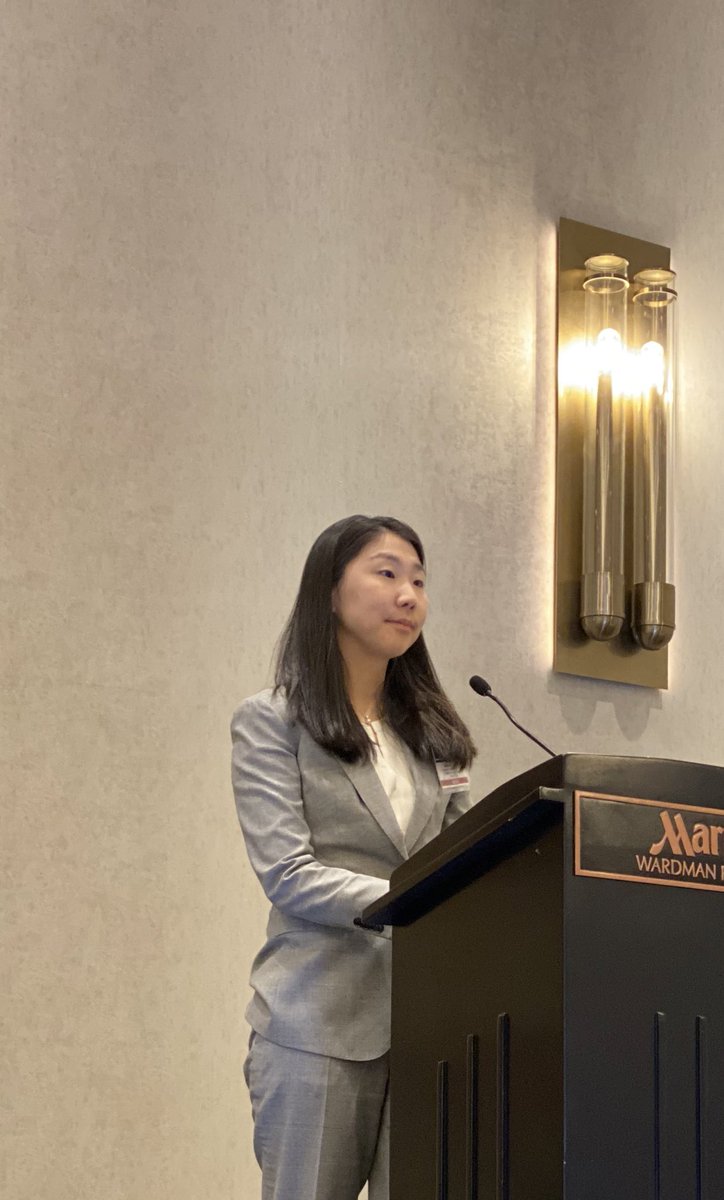

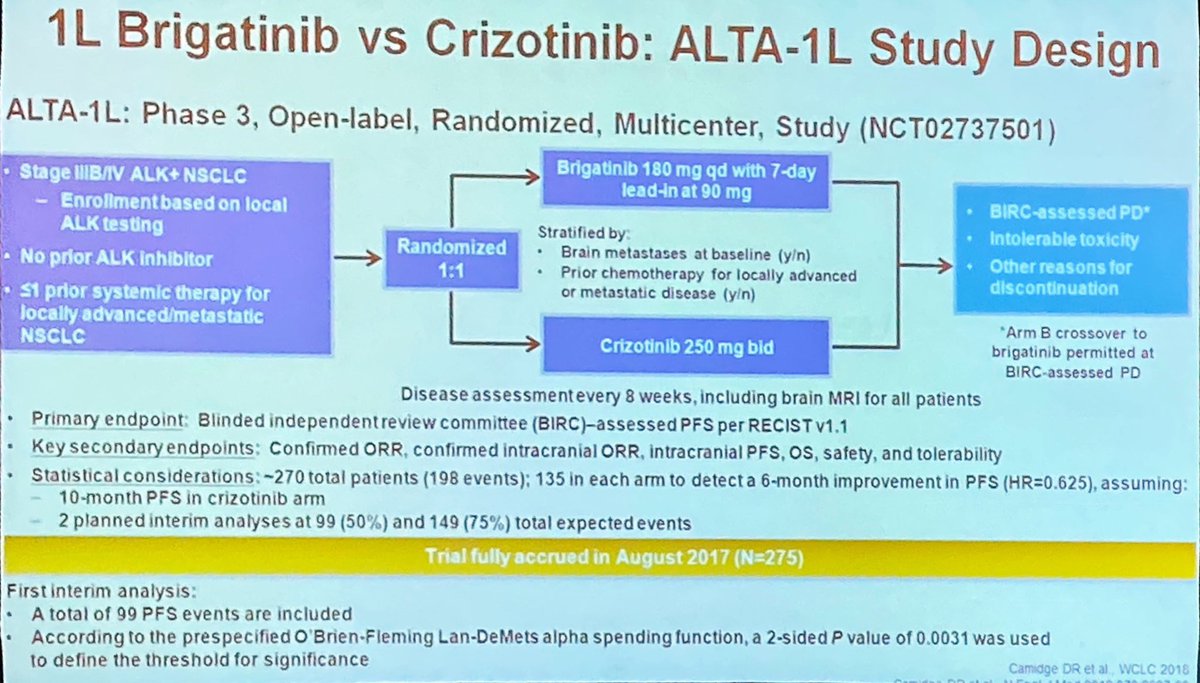

#DCLUNG19 Resistance in #ALK dictated by initial therapy. Clinical findings replicate preclinical models: I1171N seen post alectinib but not brigatinib or ceritinib. G1202R an issue for all. Clinical data coming in now. #OncoAlert #LCSM #LCAM 



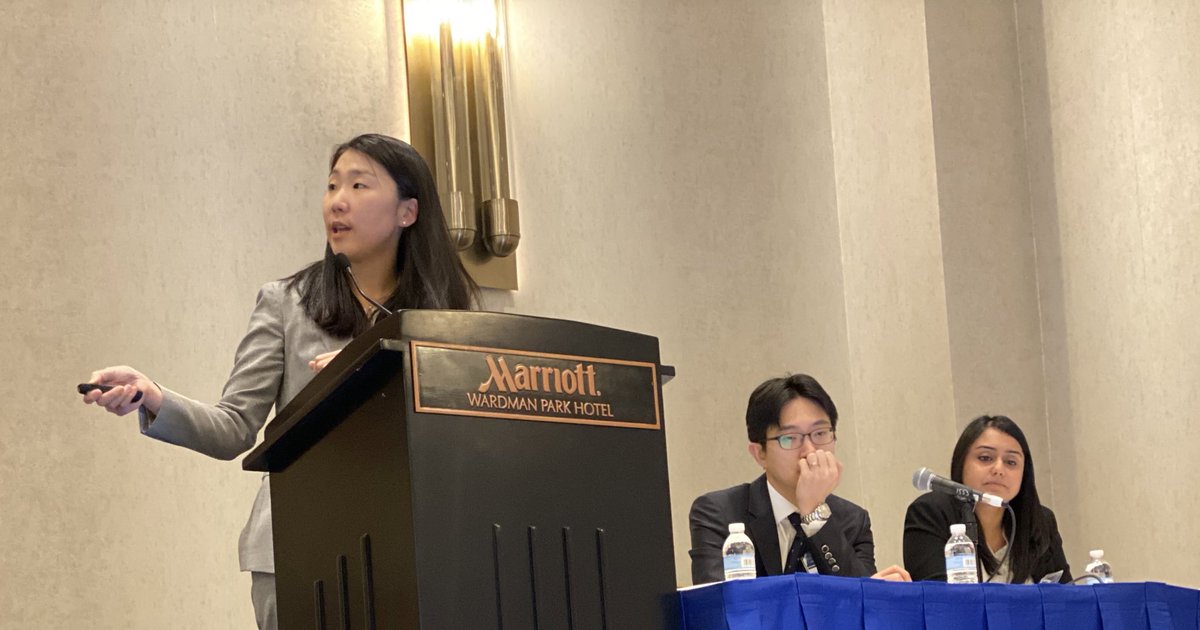



#DCLUNG19 Lorlatinib is a very active drug in refractory #ALK #NSCLC with good CNS penetration but efficacy greater if solvent front mutation detected. Still with responses in absence of mutation. Chemo still an option as well. Next challenge: compound mutations! #OncoAlert 




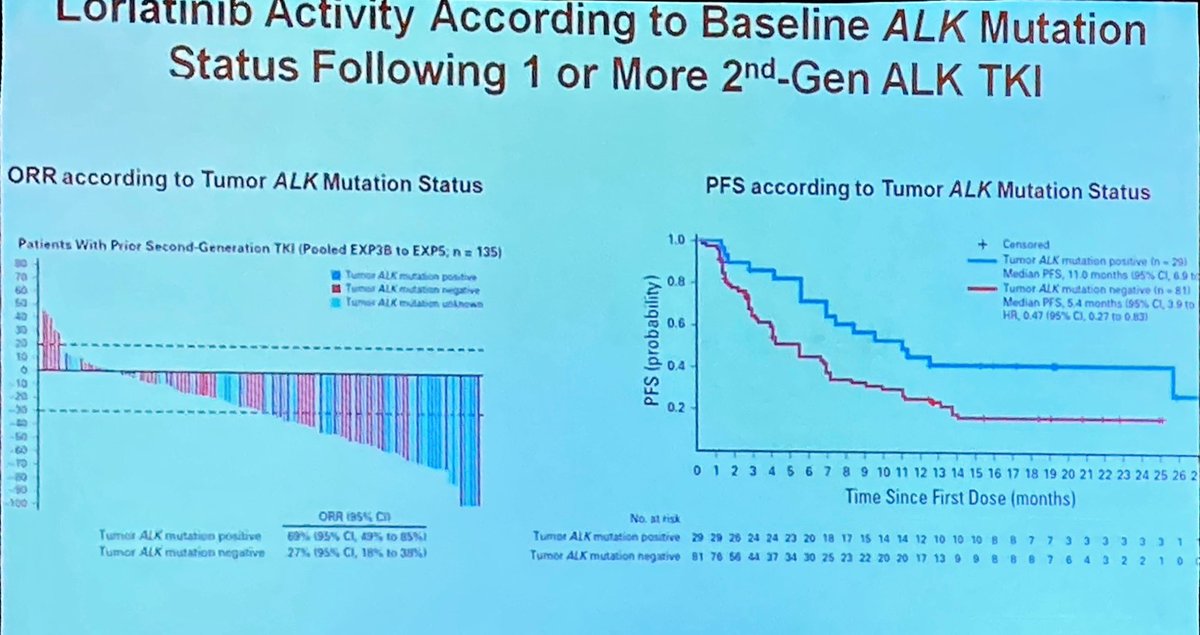

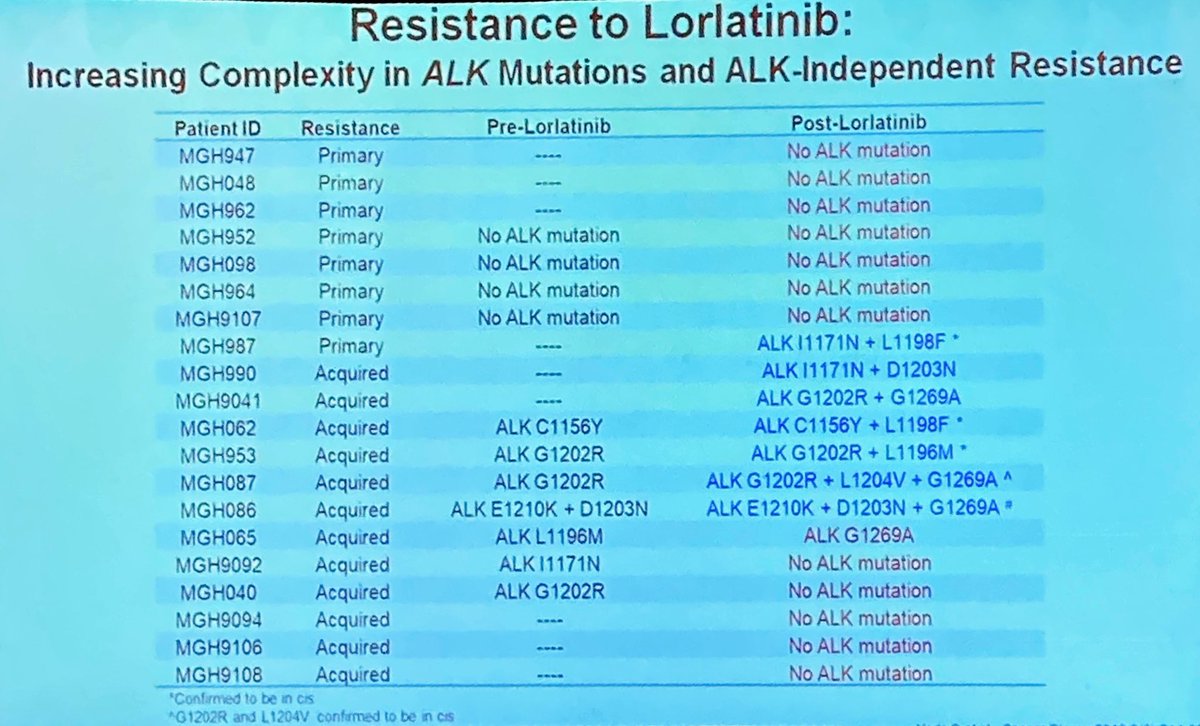
#ESMO19 Shirish Gadgeel presents #ALK cohort of BFAST. Global Phase II/III using blood based NGS to guide therapy. 10-20 mL of blood drawn, results within 10-14d, assigned treatment based on results (ALK, RET, ROS1, bTMB). Goal to show consistency using blood only. #OncoAlert 




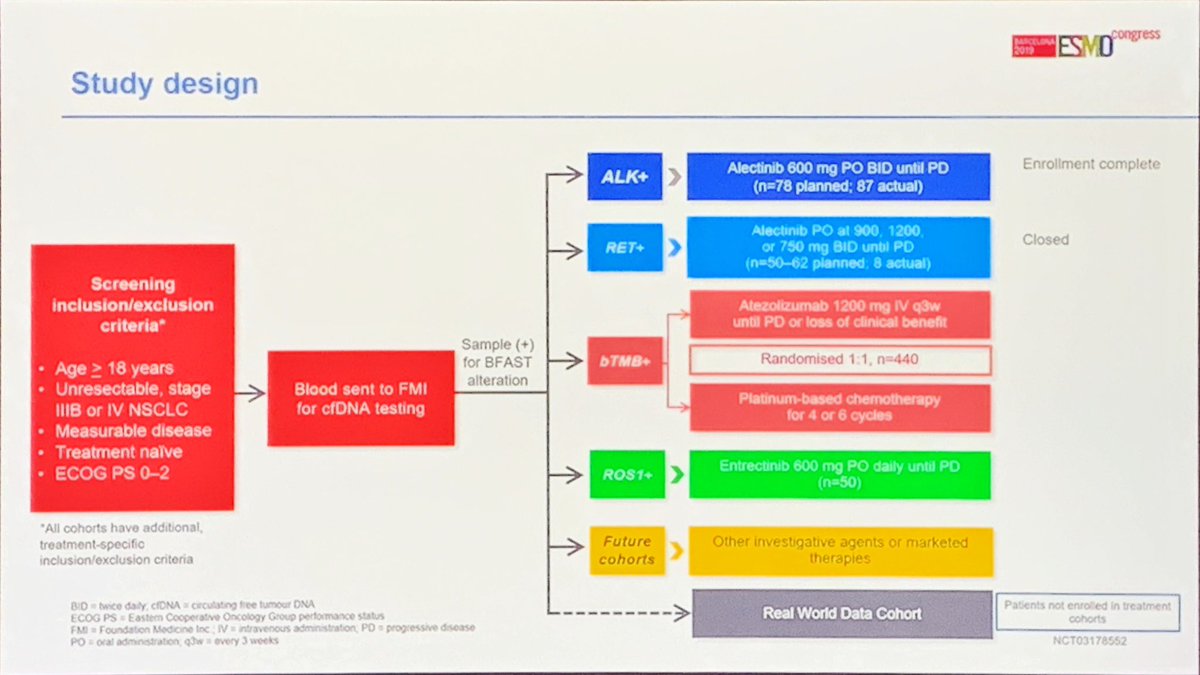
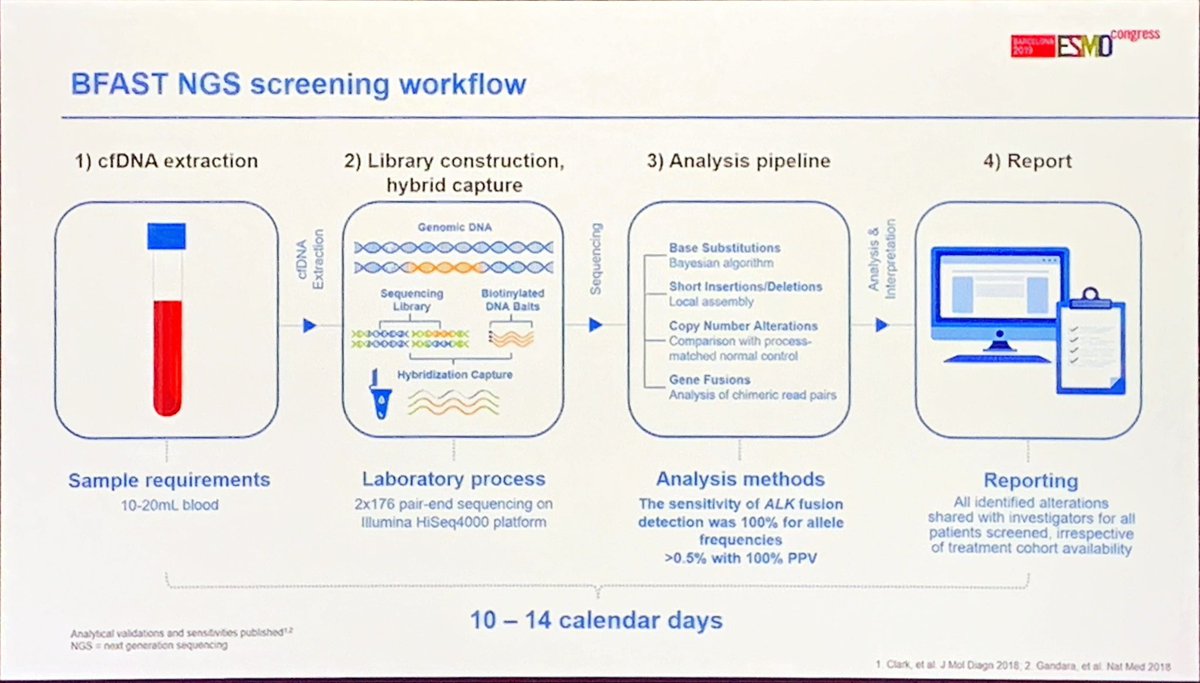
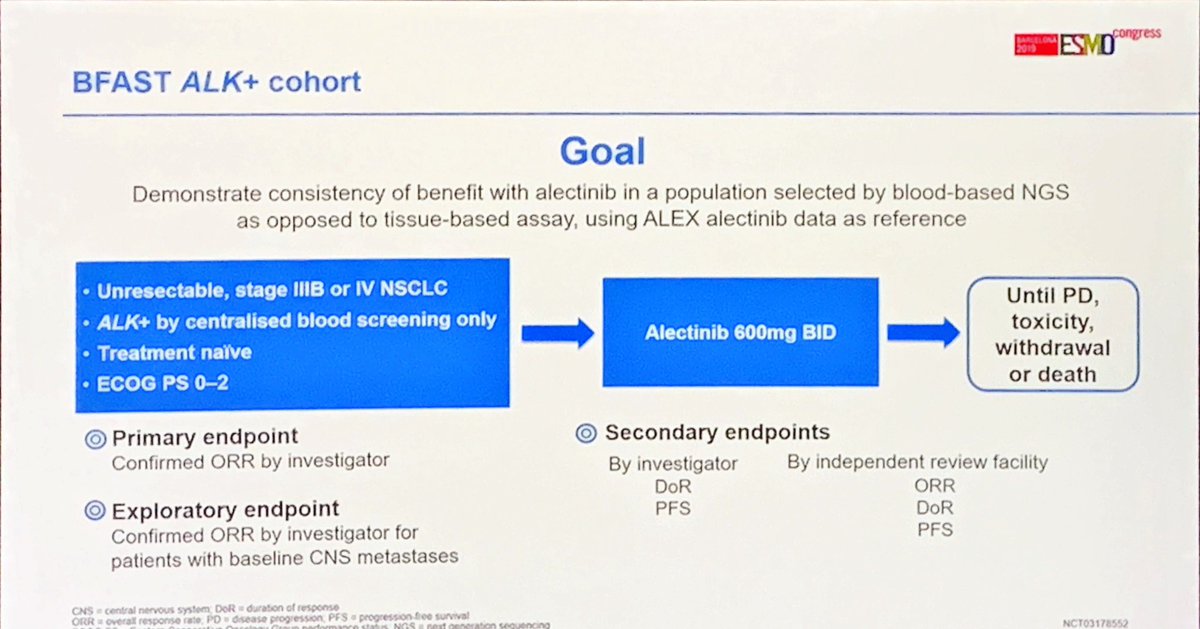
#ESMO19 Reports only for ALK cohort. Met accrual in 1 year. Screened 2219 patients and identified 119 ALK fusions. 5.4% prevalence similar to expected rates. Mostly EML4. #OncoAlert 





#ESMO19 independent review showed RR 92% with alectinib (again, ALK+ by blood only) with 1y PFS 68%. Results very consistent with ALEX results. Safety profile similar. Unclear that this is exactly the same population but validates this general approach. #OncoAlert #LCSM 


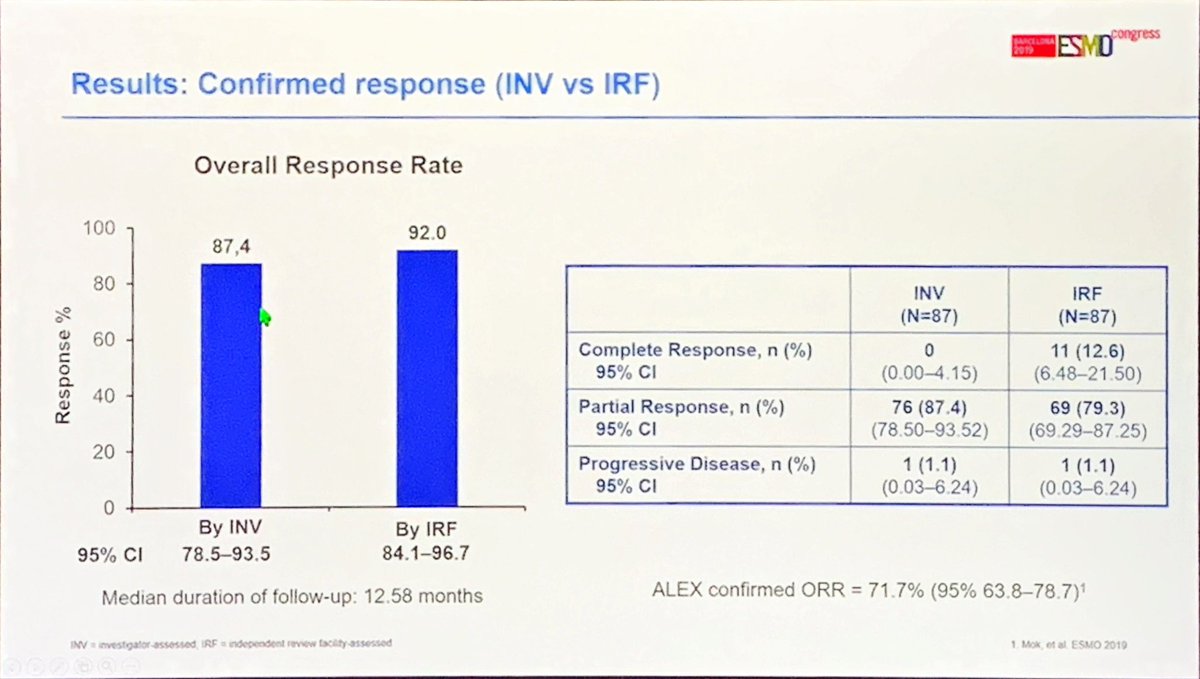


#ESMO19 Laura Chow presents ASCEND-7, examining scrutinize in #ALK NSCLC with brain metastases. Not a randomized study but an important patient subgroup given the high tropism for CNS in ALK+ cancer. #OncoAlert #LCSM 


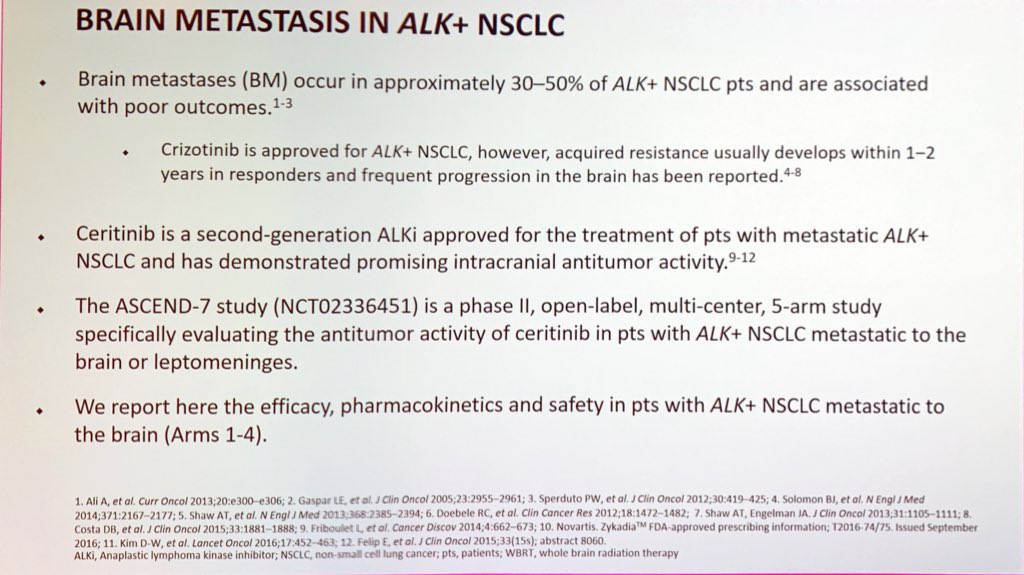


#ESMO19 PFS here encouraging but not surprising. Same with OS. Reassuring when medians are not reached. #OncoAlert 



#ESMO19 Key results here. Particularly for Arm 4, where patients had no prior radiation. ORR 52%. Need to standardize our endpoints across studies. ORR, DOR, DCR - all measure slightly different things. #OncoAlert 
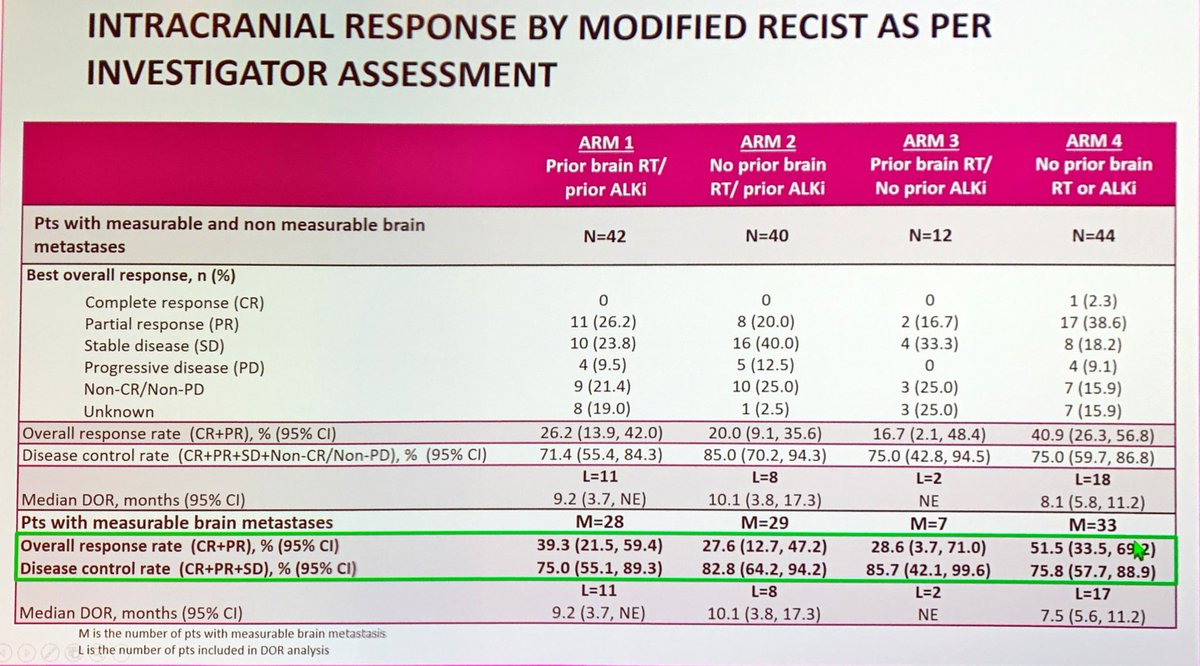
#WCLC19 @rdoebele kicks off the plenary with a discussion of tumor agnostic therapy. Really refers to biology driven. Our current siloed approach to oncology is a bit of a barrier to this strategy. Timing favored lung cancer as the field where this became mainstream. #OncoAlert 




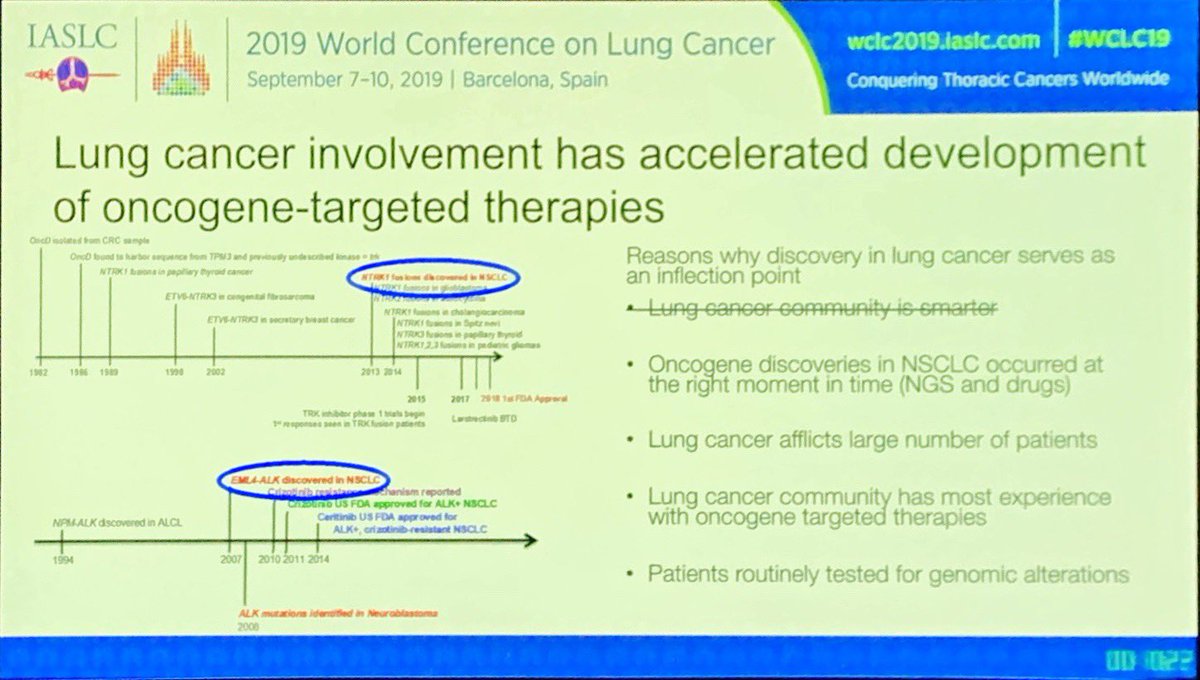
#NTRK is a great example where we see efficacy across tumors and no indication of a specific tumor type resistant to inhibition. But we see similar themes in #ALK and #ROS1 - will there be a regulatory path forward? #OncoAlert #WCLC19 


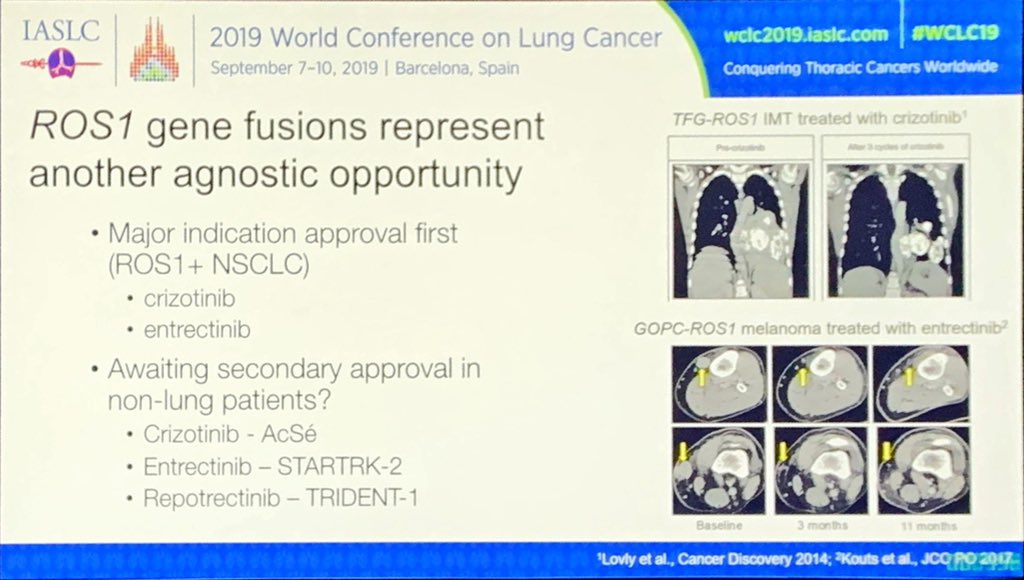
Importantly, resistance also seems to be tumor agnostic. Similar mutations seen mediating resistance across tumor types. Predicting #NRG1 as next important target across tumor types. Biology is more dependent on the genomics than the histology! #WCLC19 #OncoAlert 



#OncoAlert Important work by @RymaBenayed @MLadanyi in @CCR_AACR online now reviewing why RNA testing is critical for patients with #NSCLC in the important search for actionable driver alterations to guide proper therapy #LCSM
clincancerres.aacrjournals.org/content/early/…
clincancerres.aacrjournals.org/content/early/…
@RymaBenayed @MLadanyi @CCR_AACR #OncoAlert The authors analyzed 254 patients with lung adenocarcinoma who were driver negative by MSK-IMPACT (DNA based NGS) and had enough tissue for RNA sequencing with ARCHER. 232 successfully sequenced and they identified 36 driver events or 15.5% of these patients! #LCSM
@RymaBenayed @MLadanyi @CCR_AACR The most common were #ROS1 (28%), #NRG1 (14%), #ALK (11%), #RET (8%) and #NTRK (8%). Patients able to receive targeted therapy had the expected good outcomes. @ros1cancer @EGFRResisters @ALKLungCancer 


